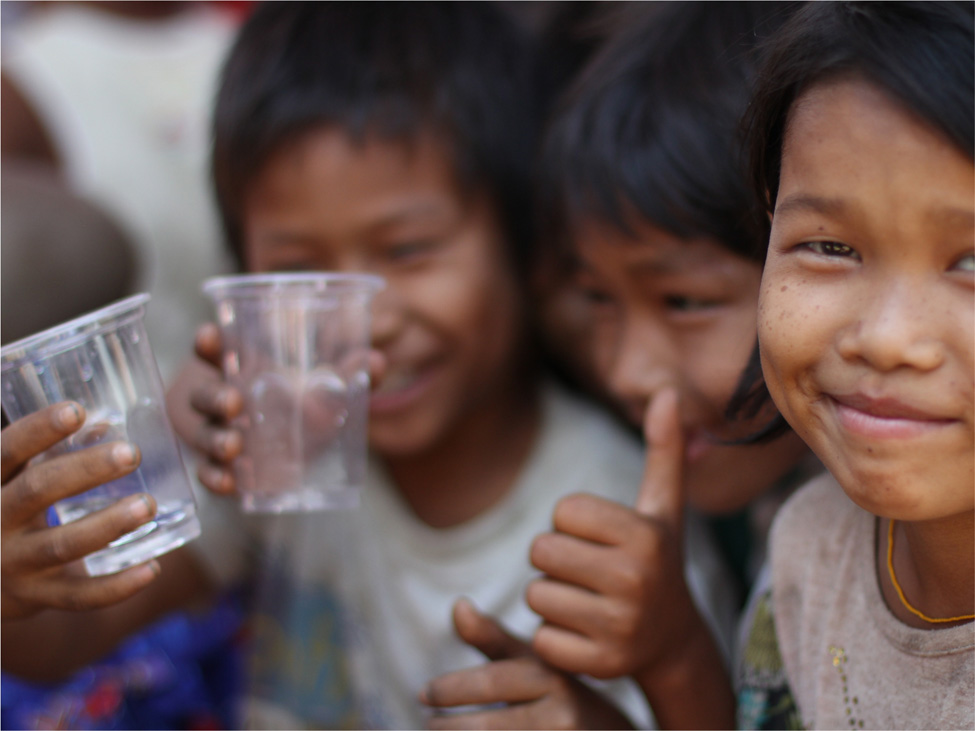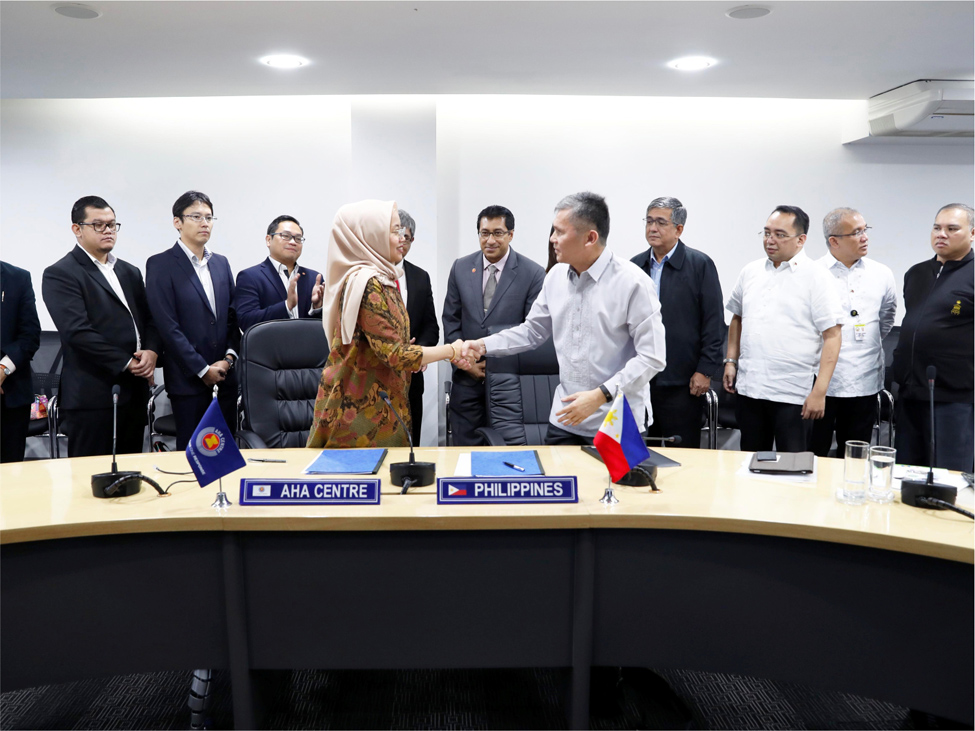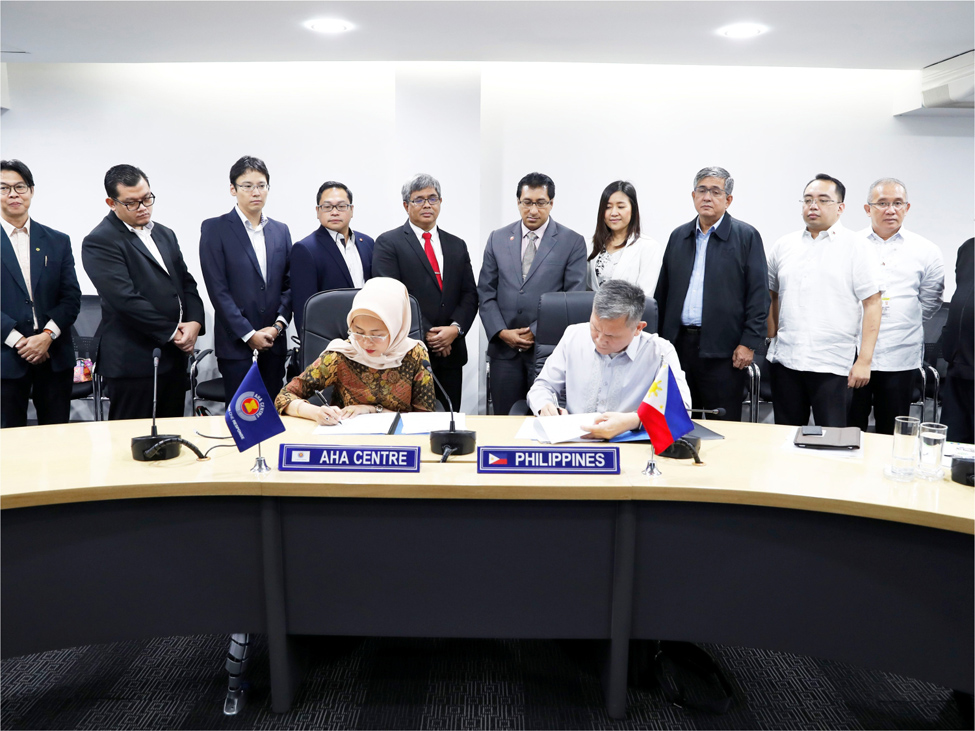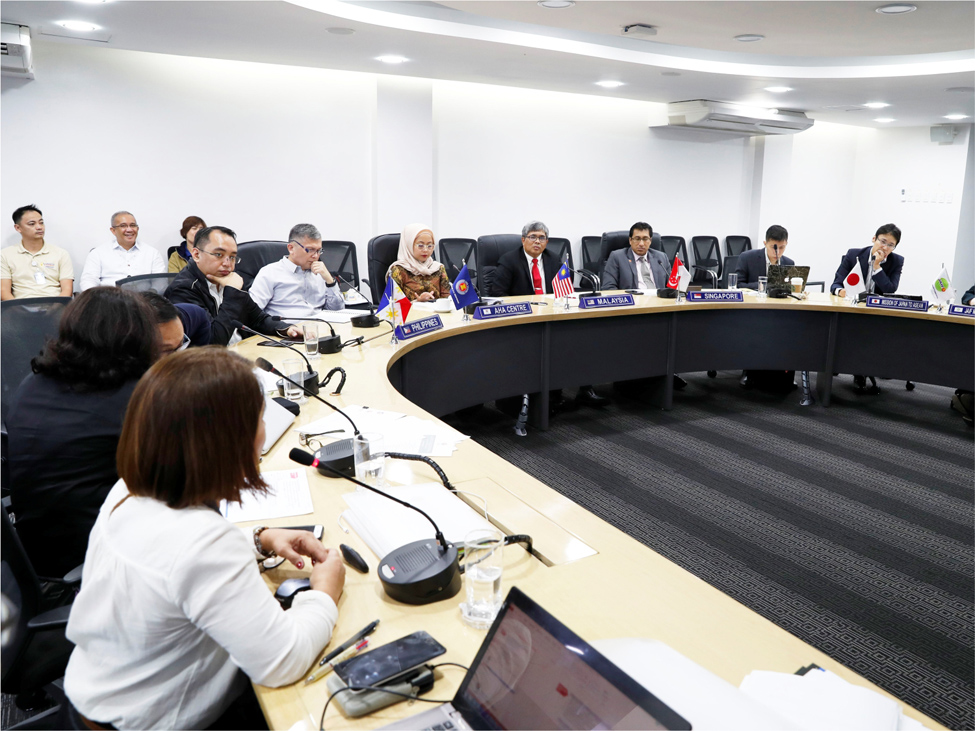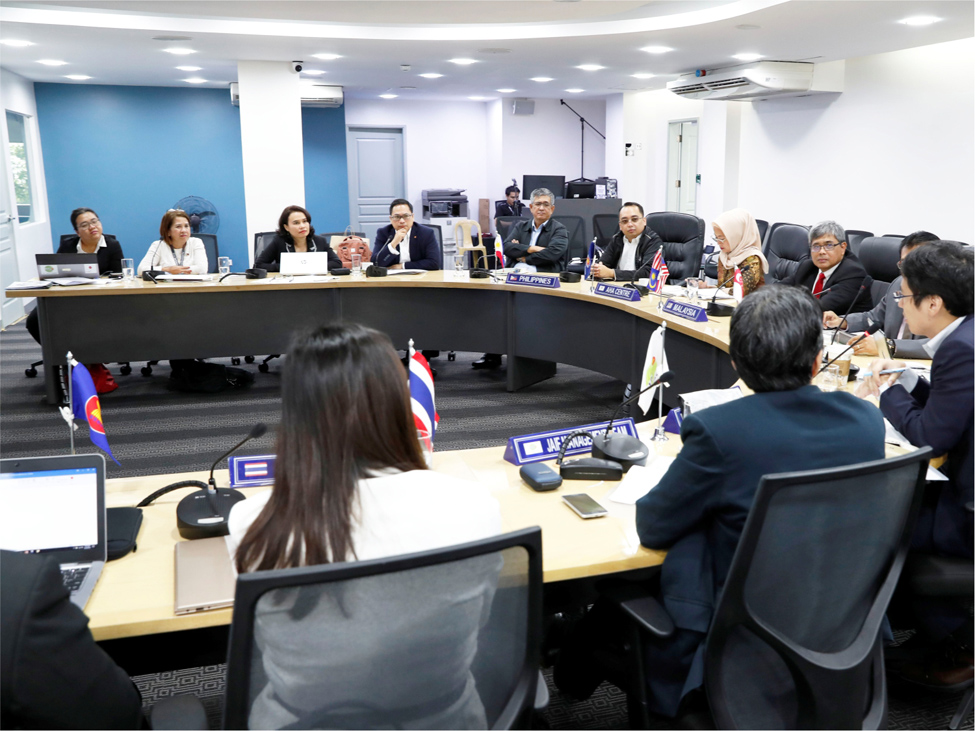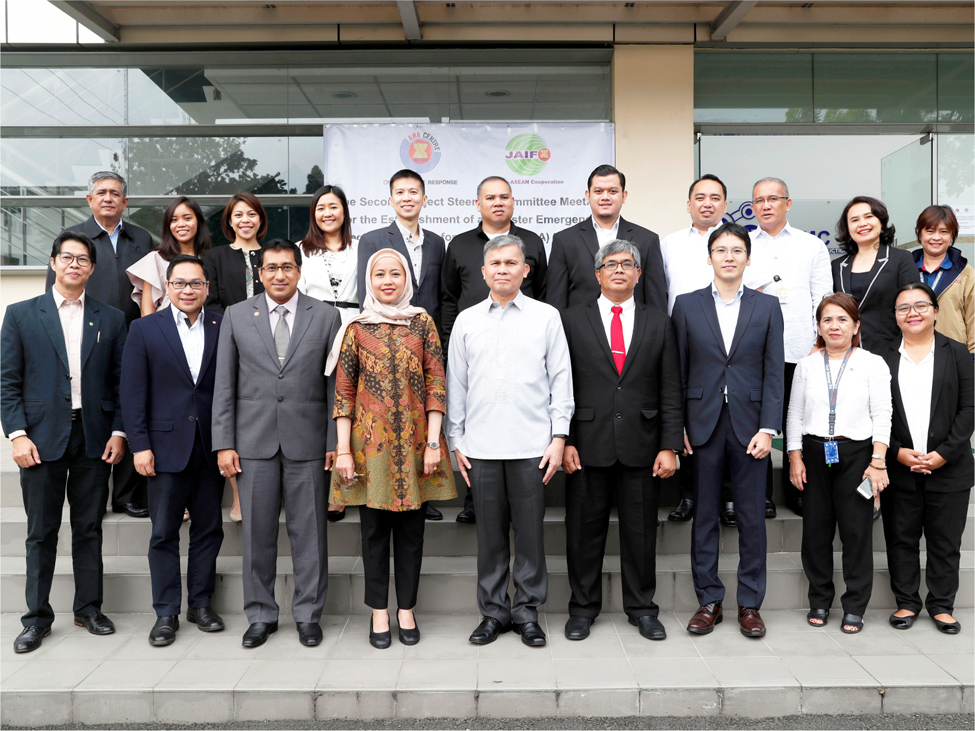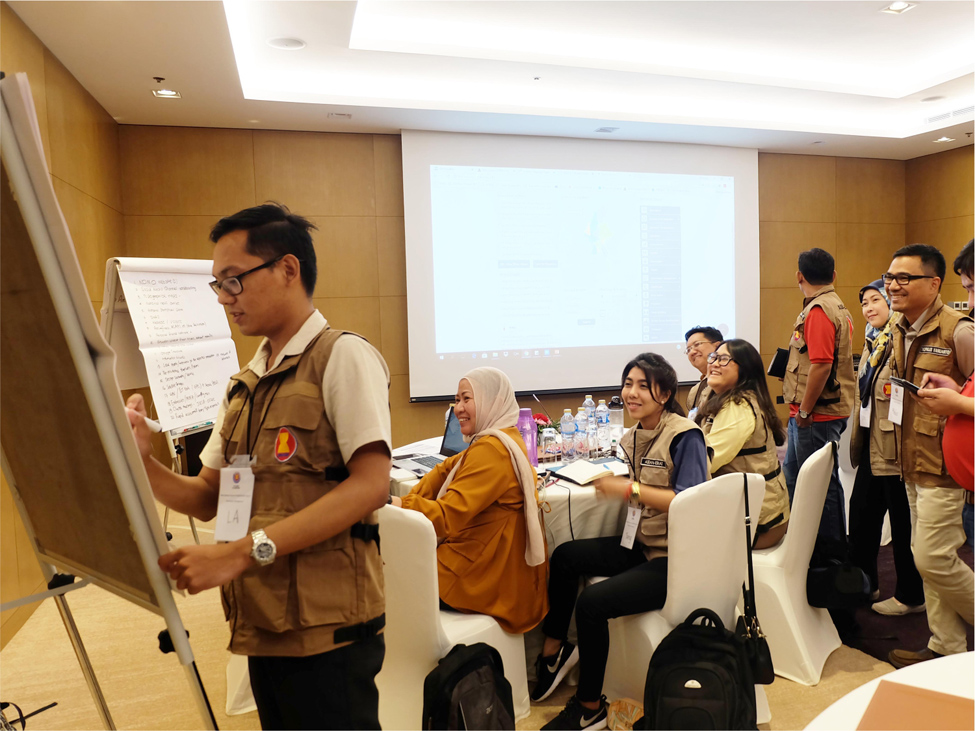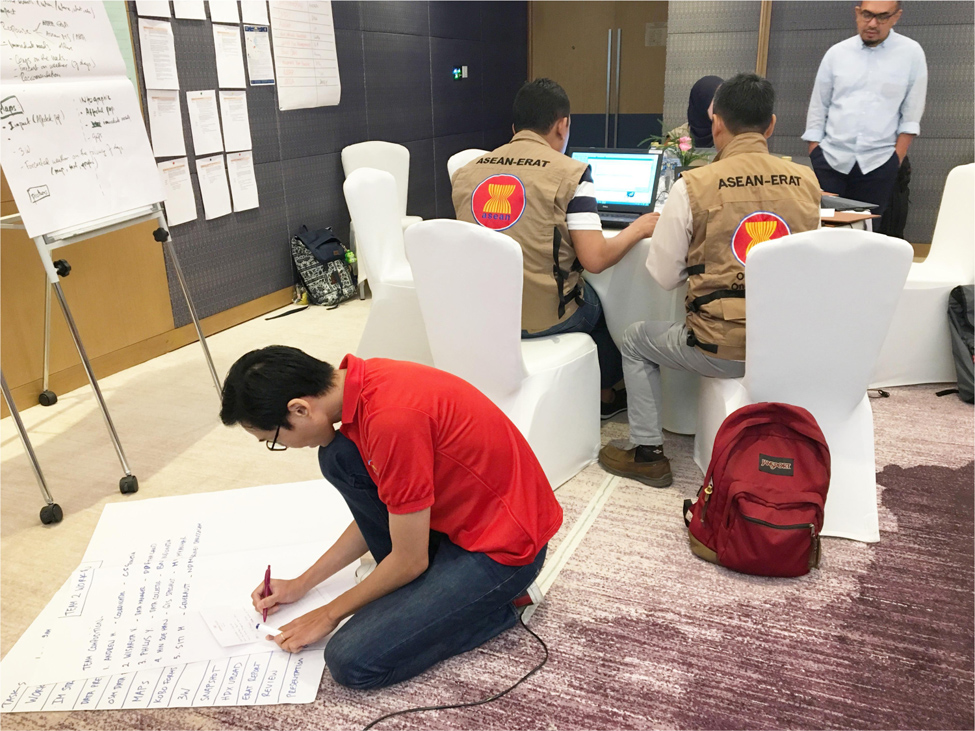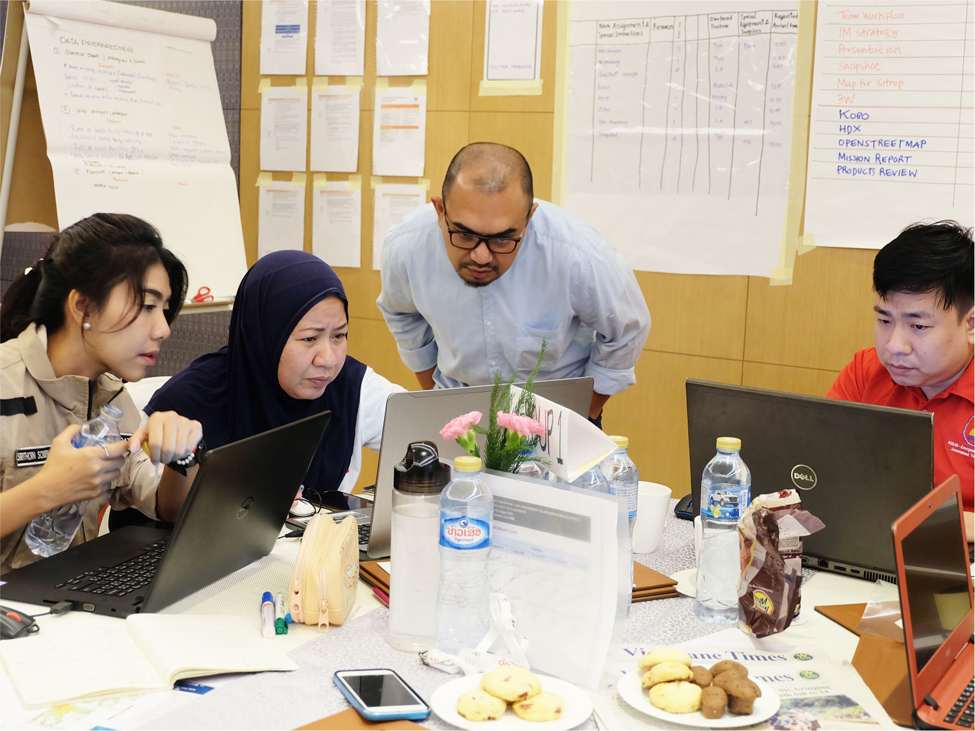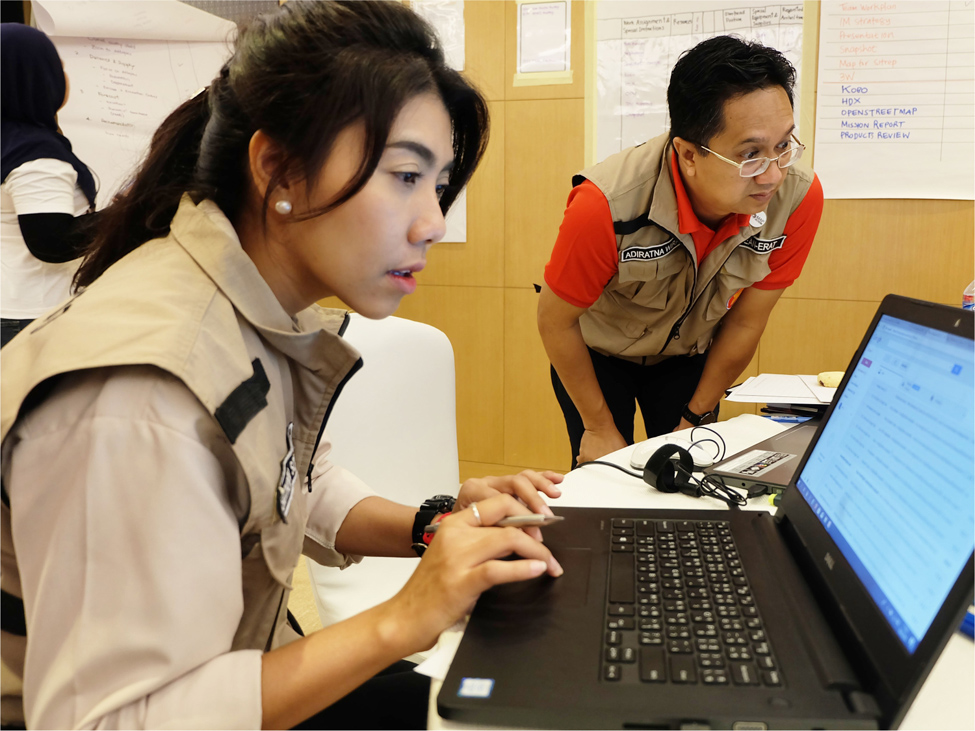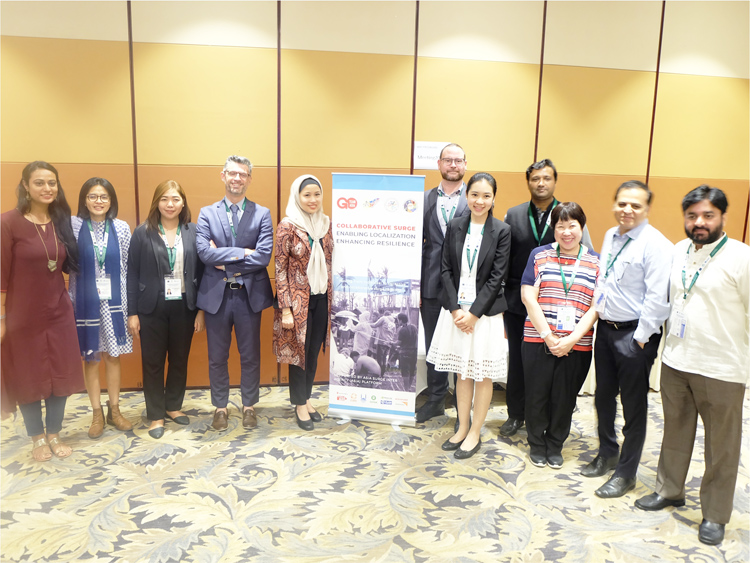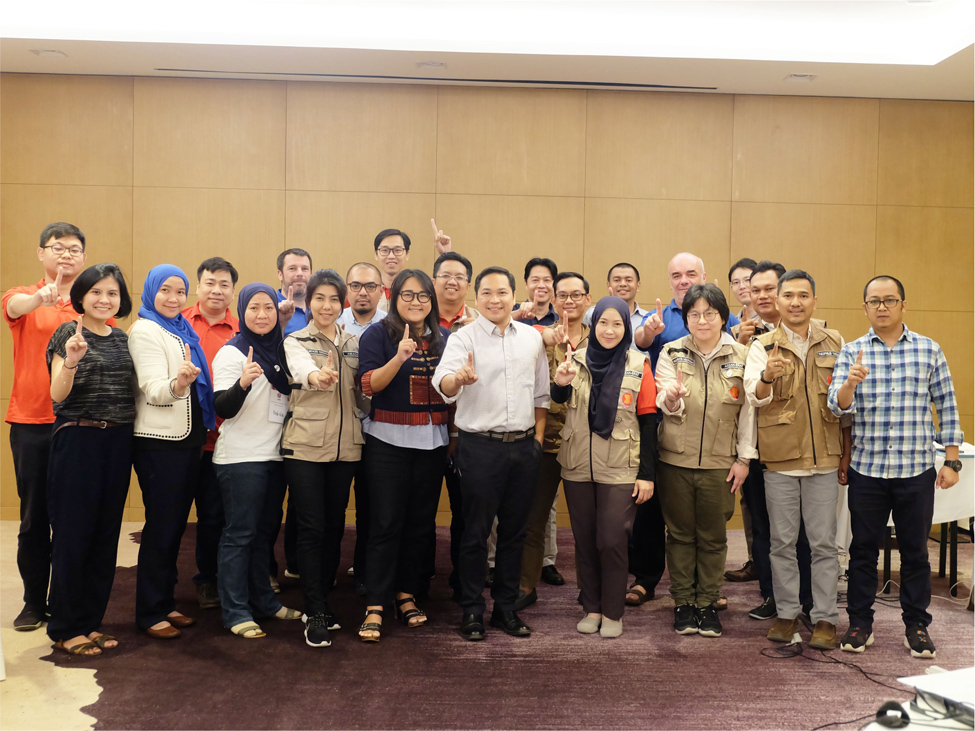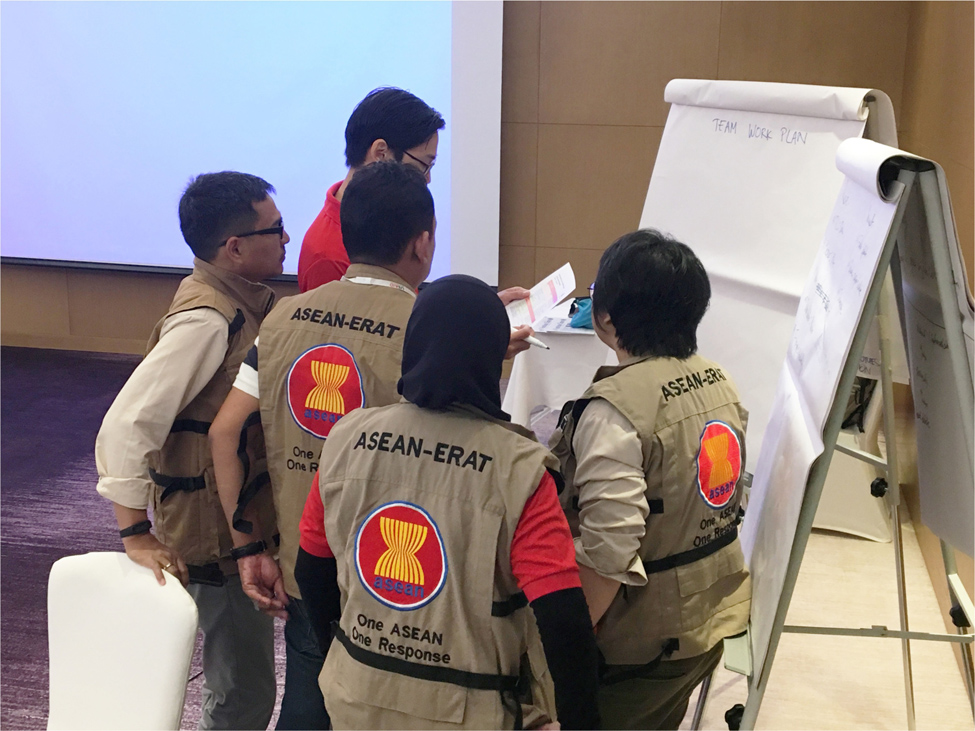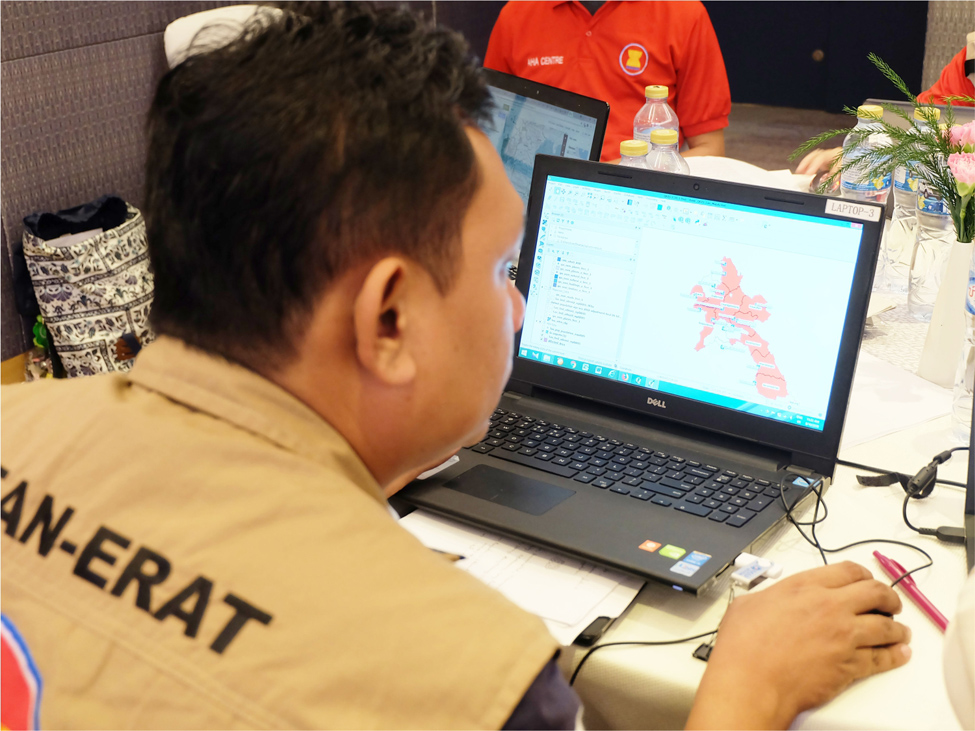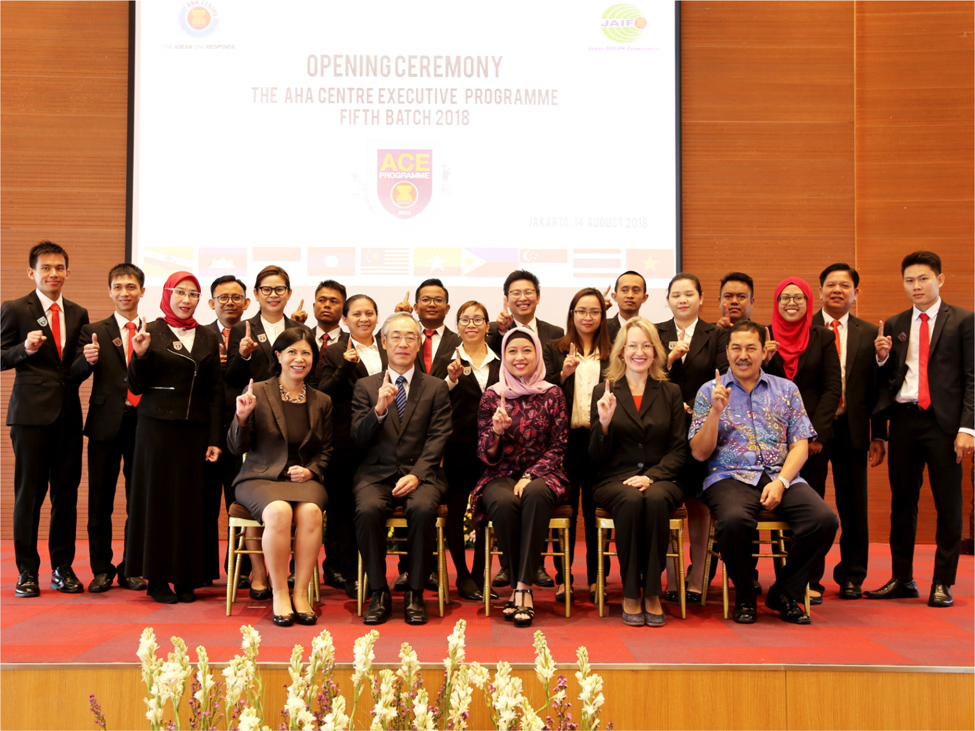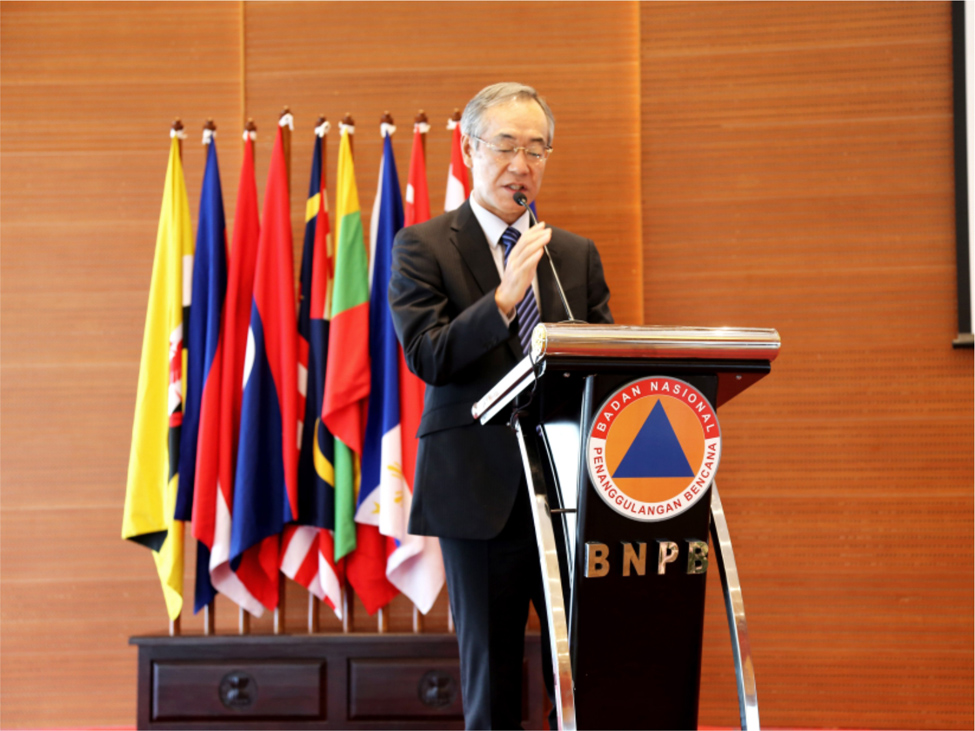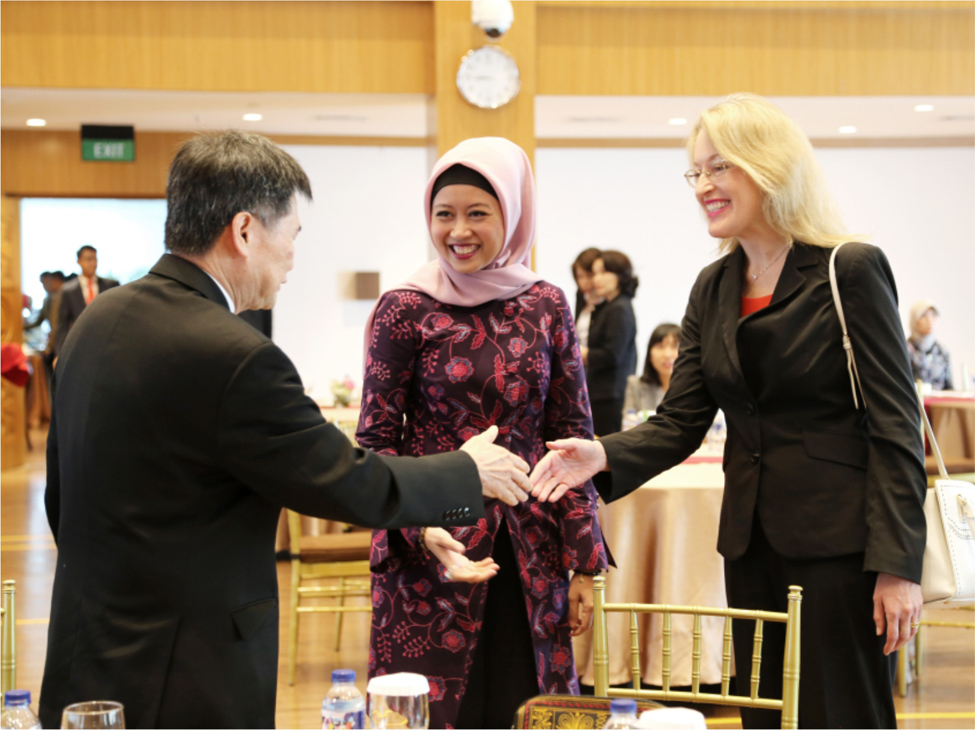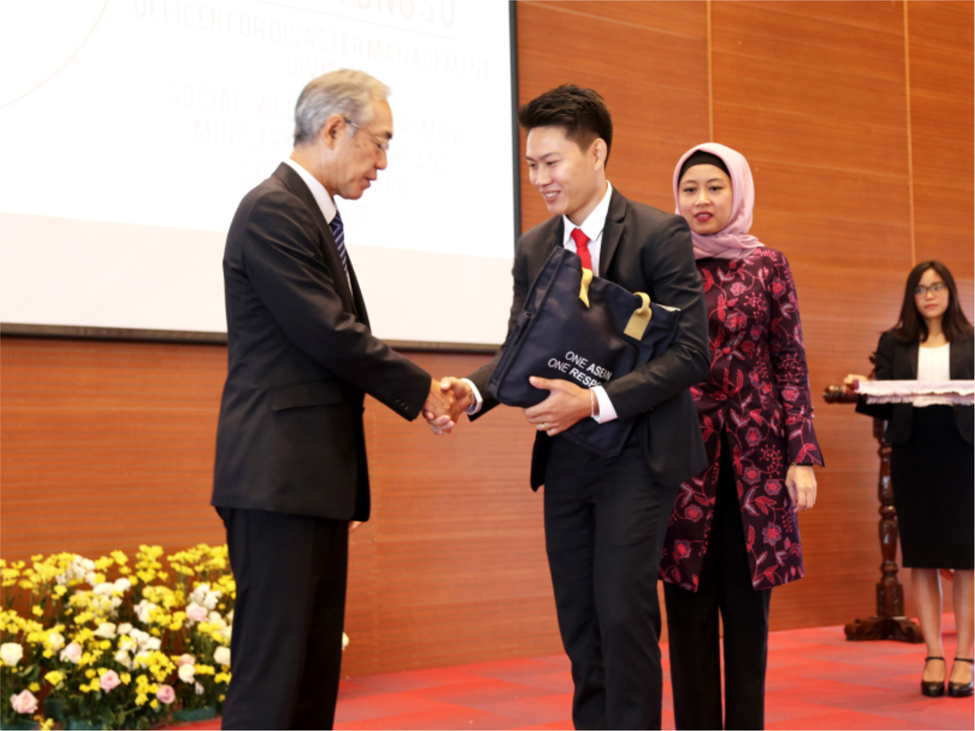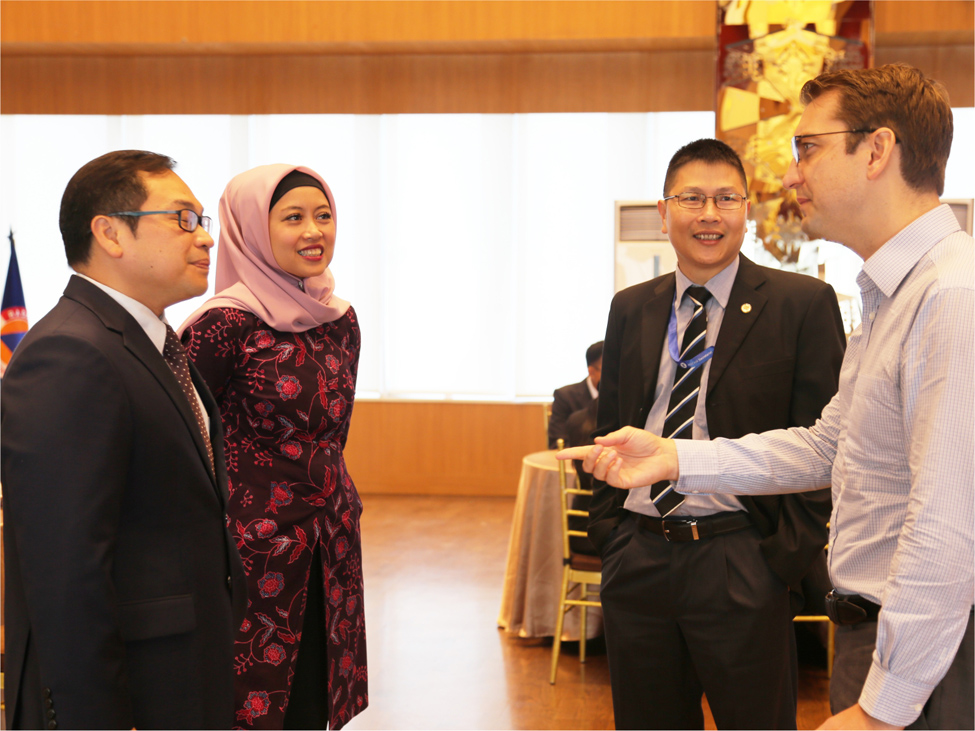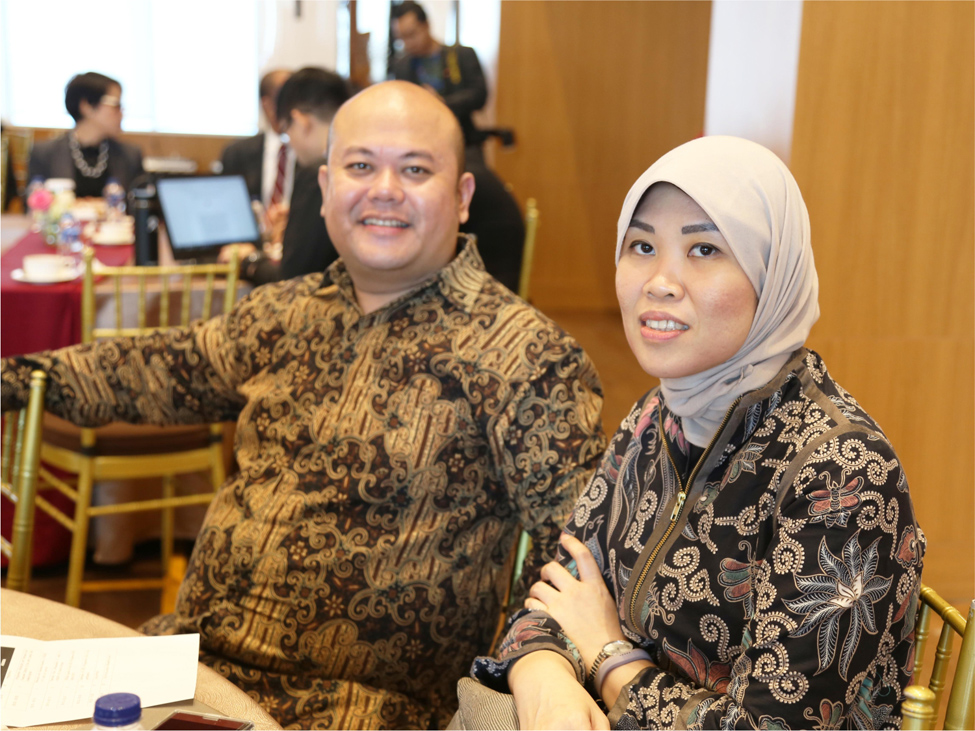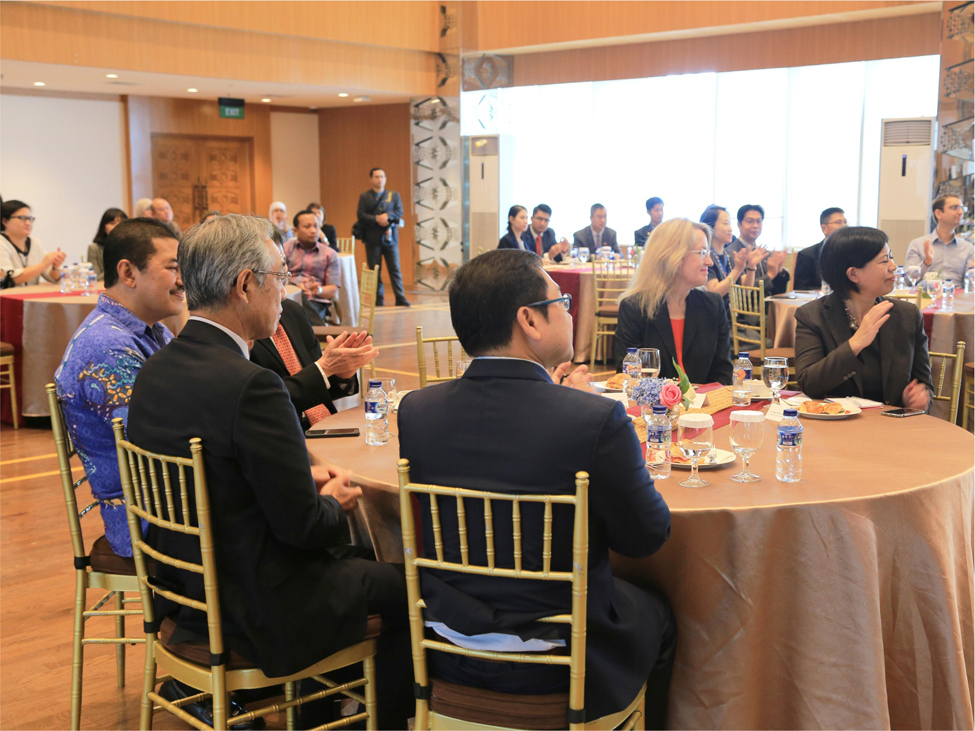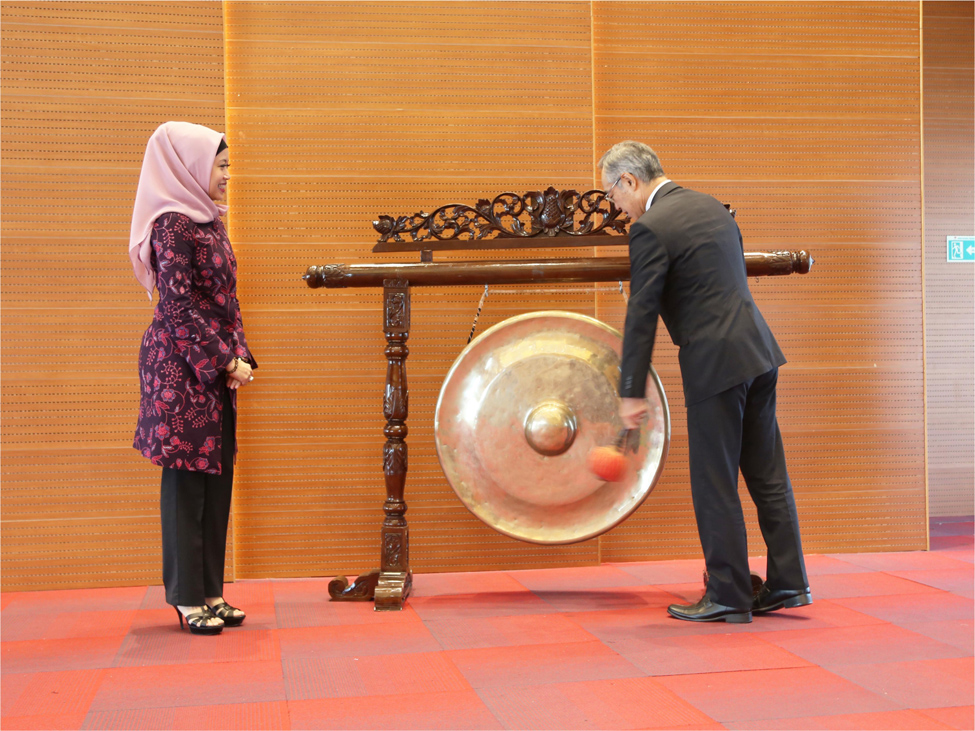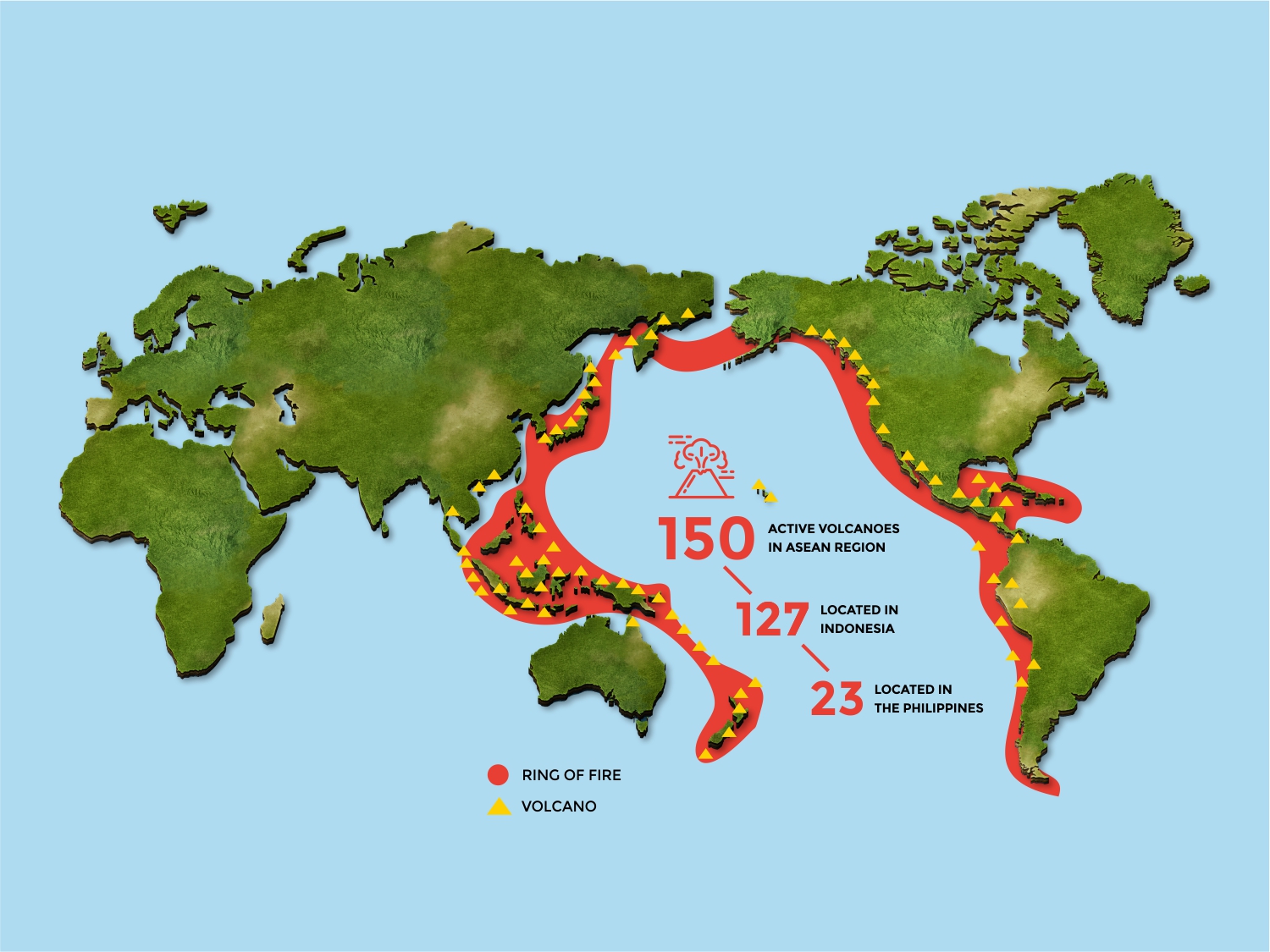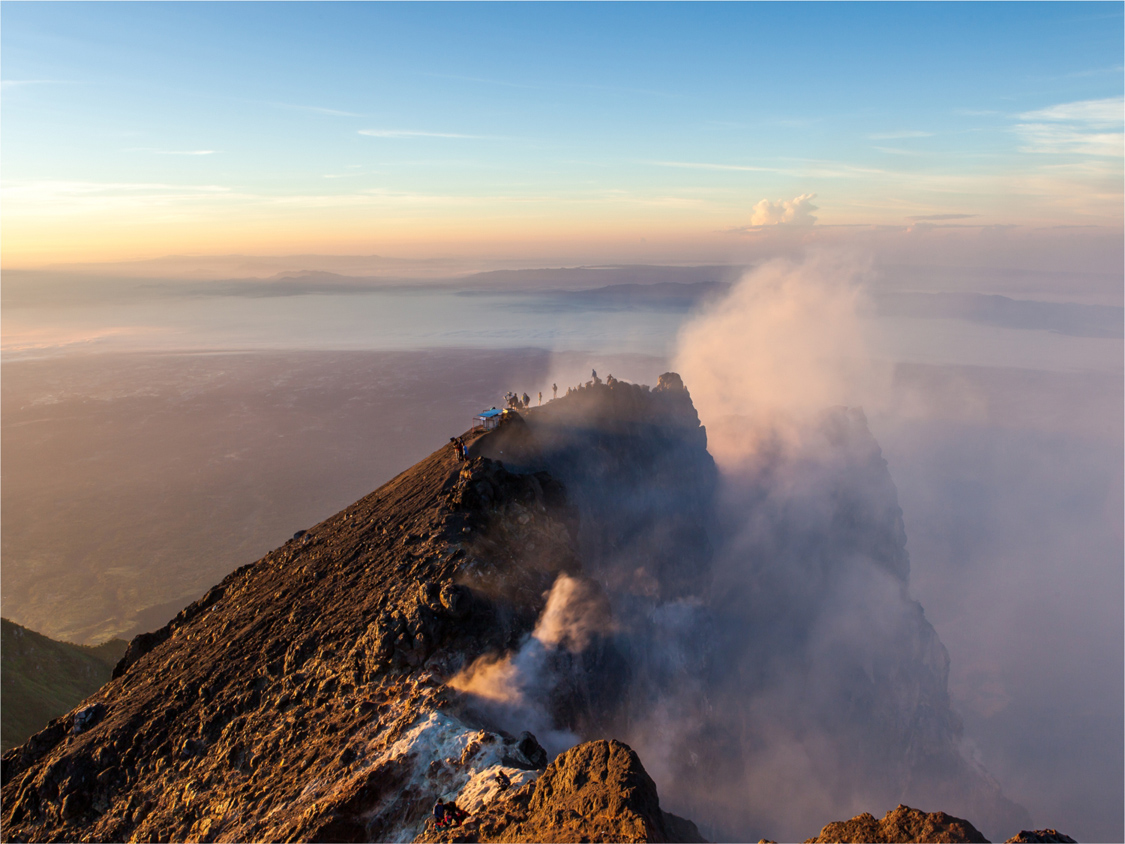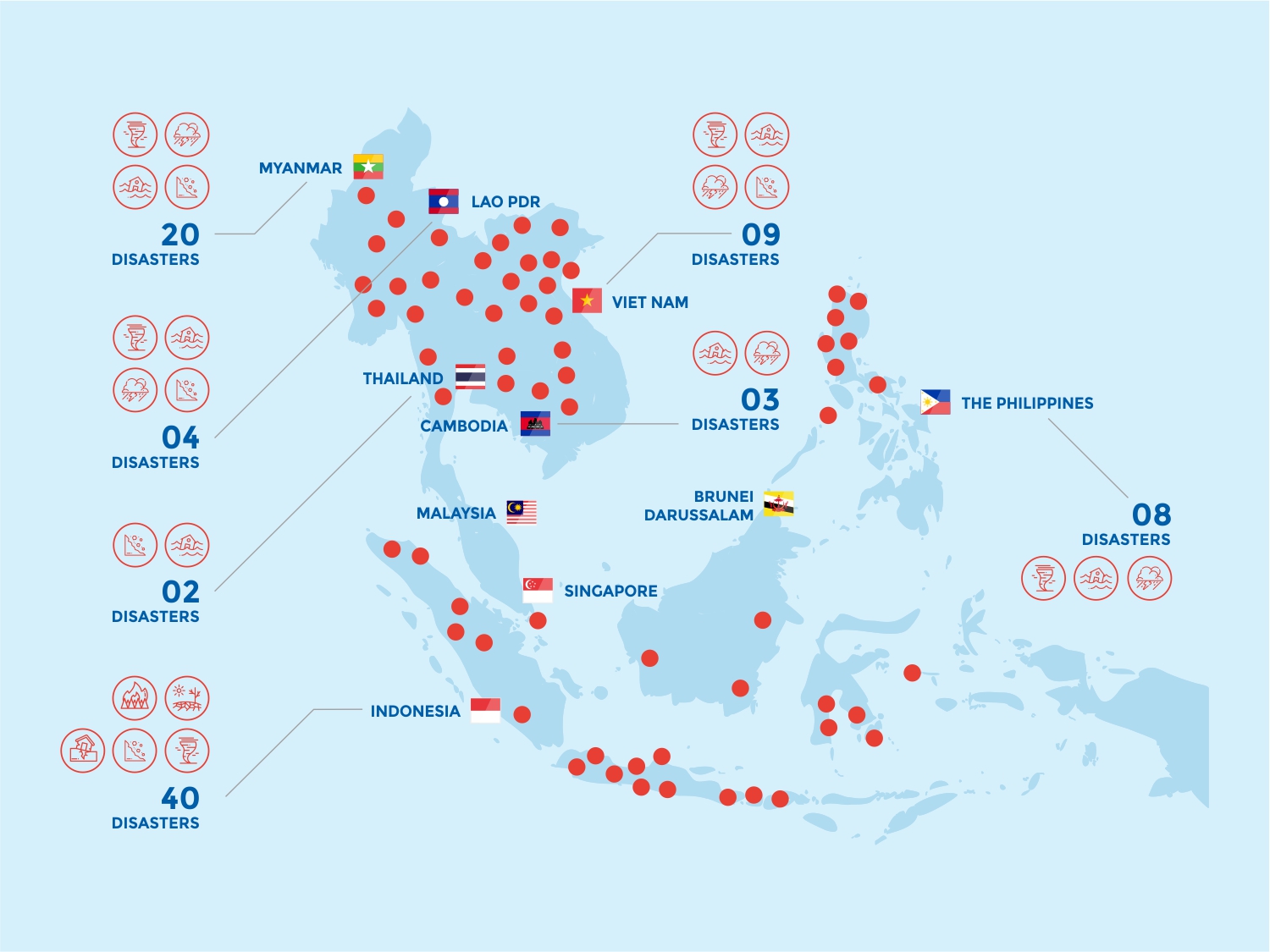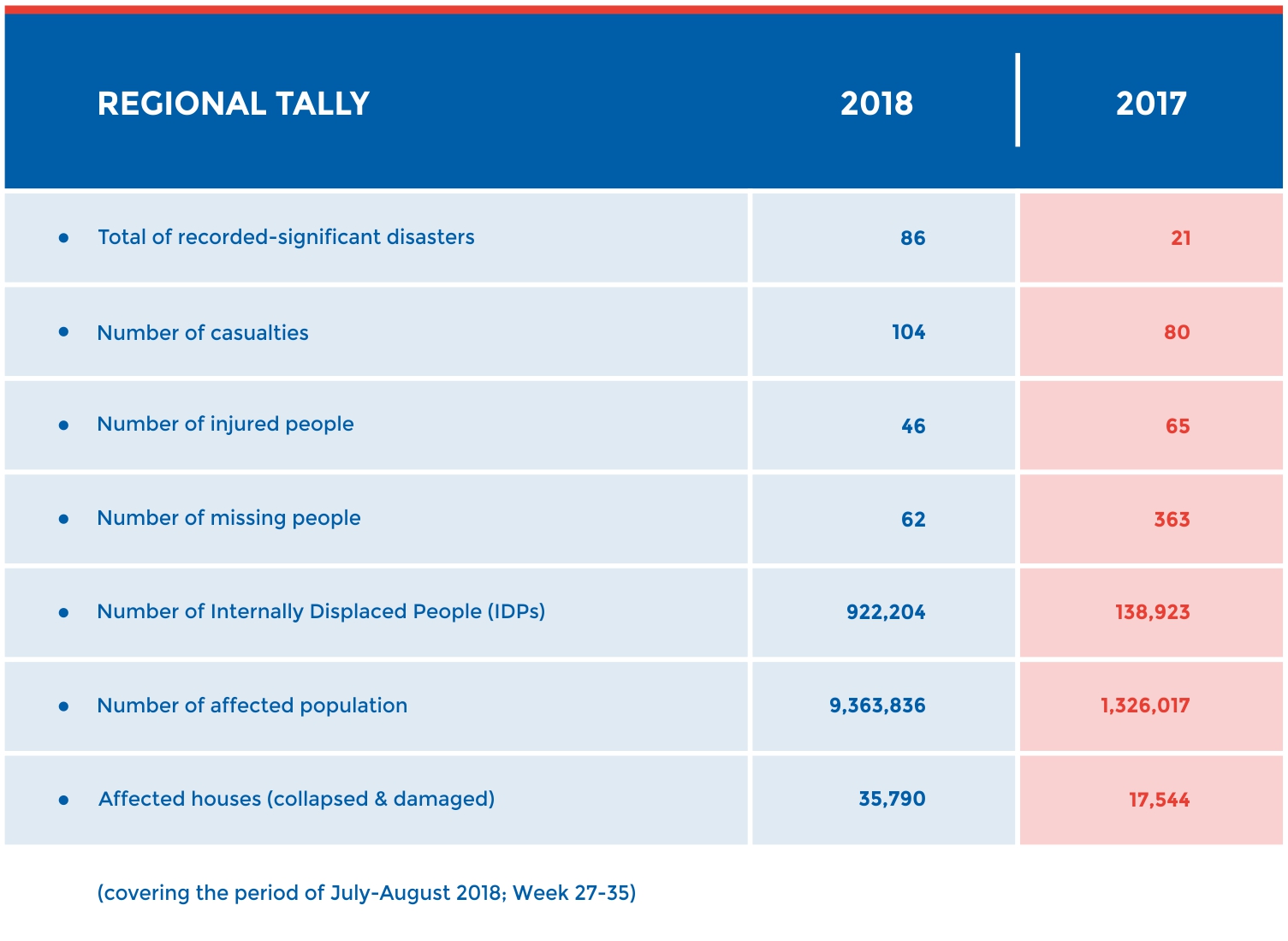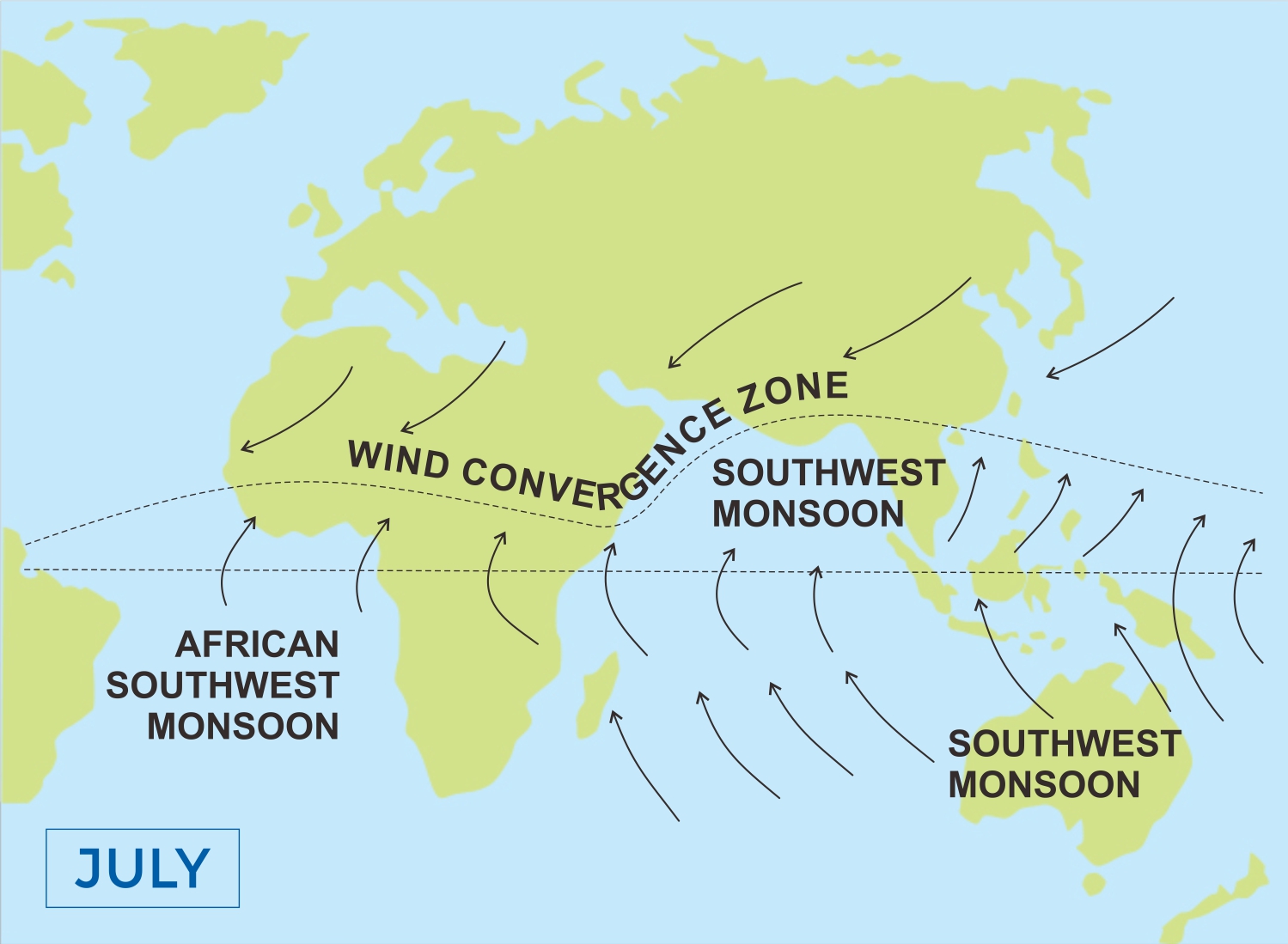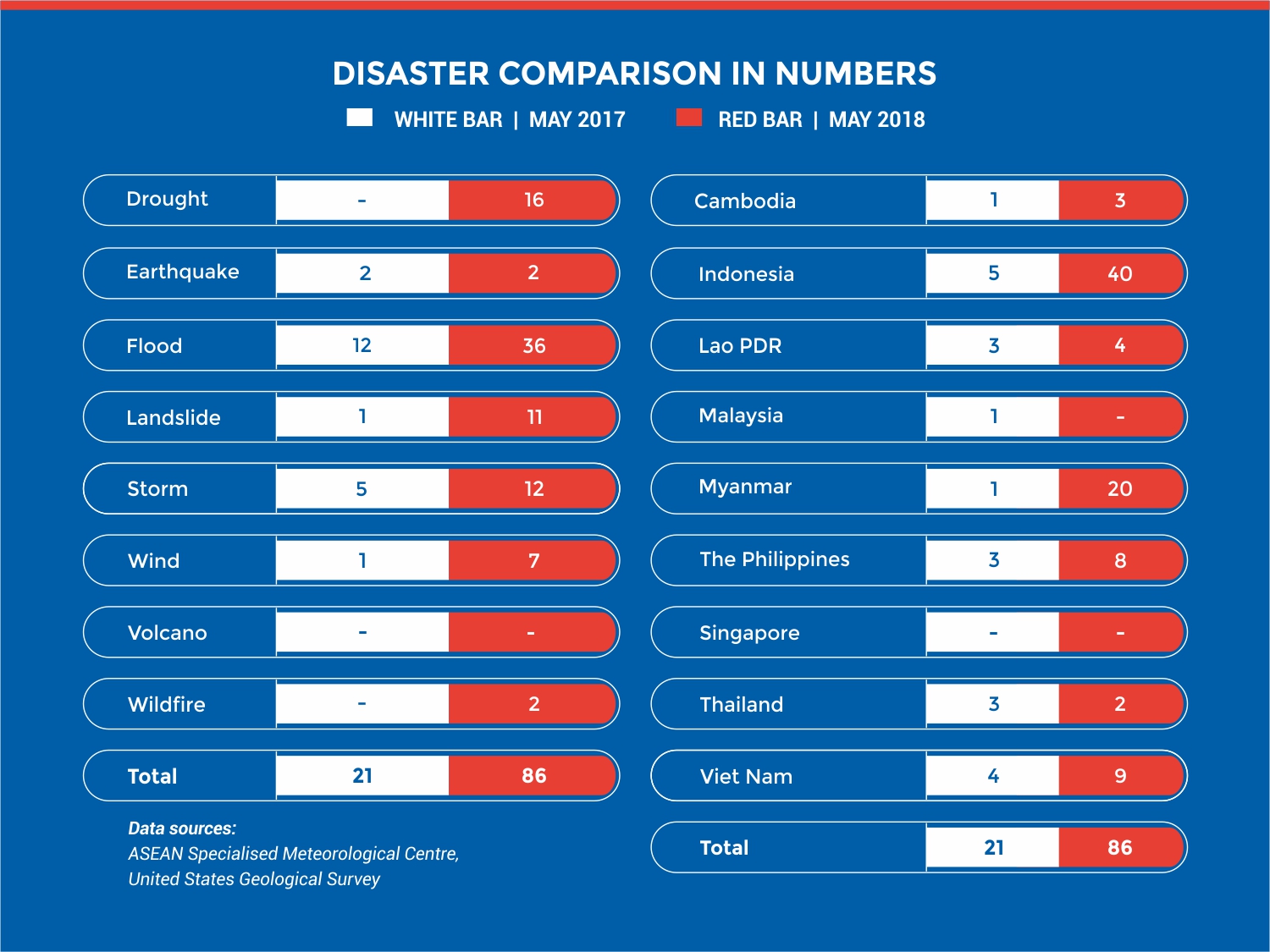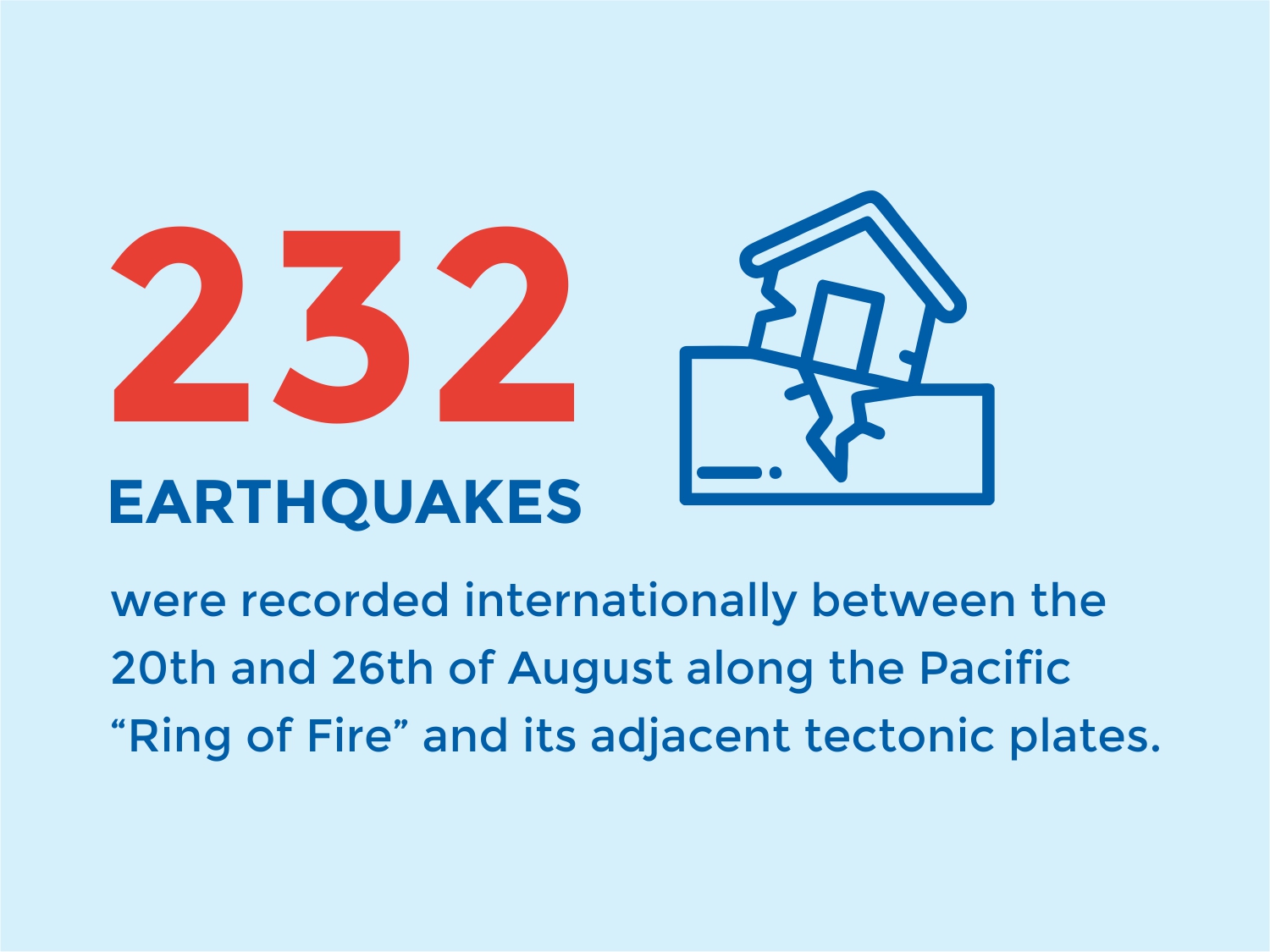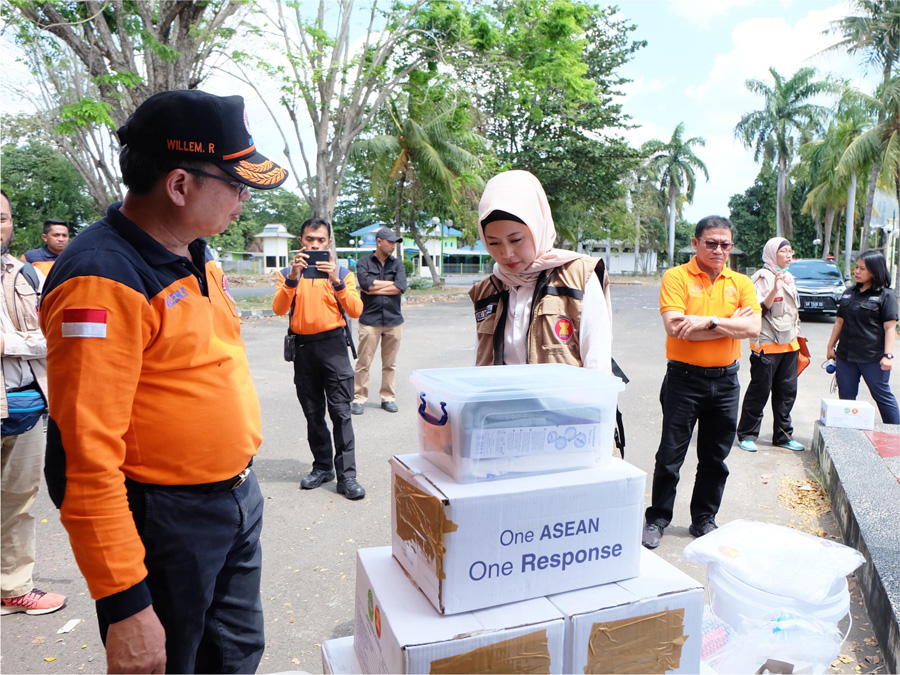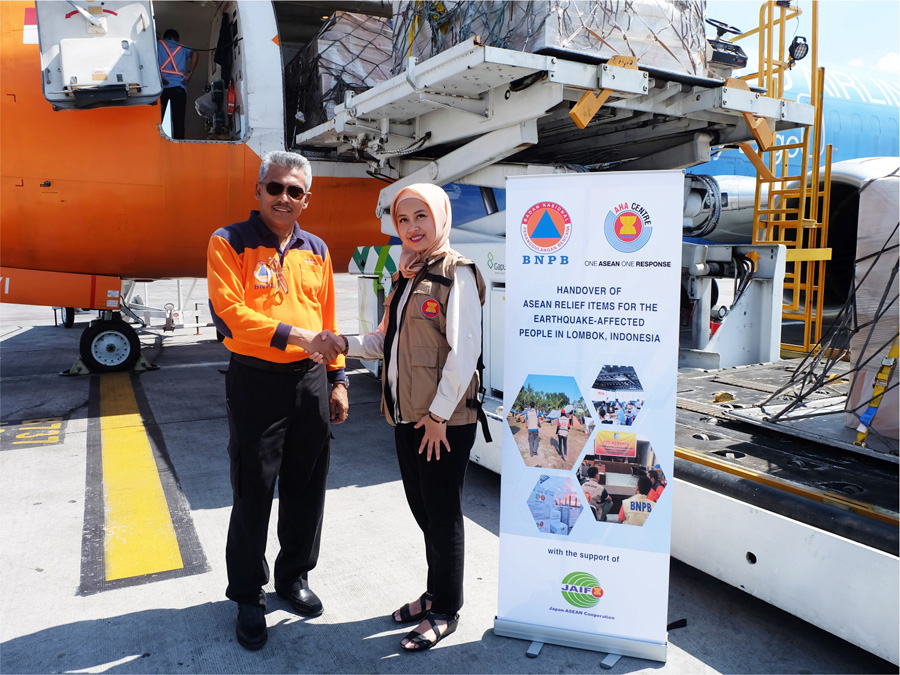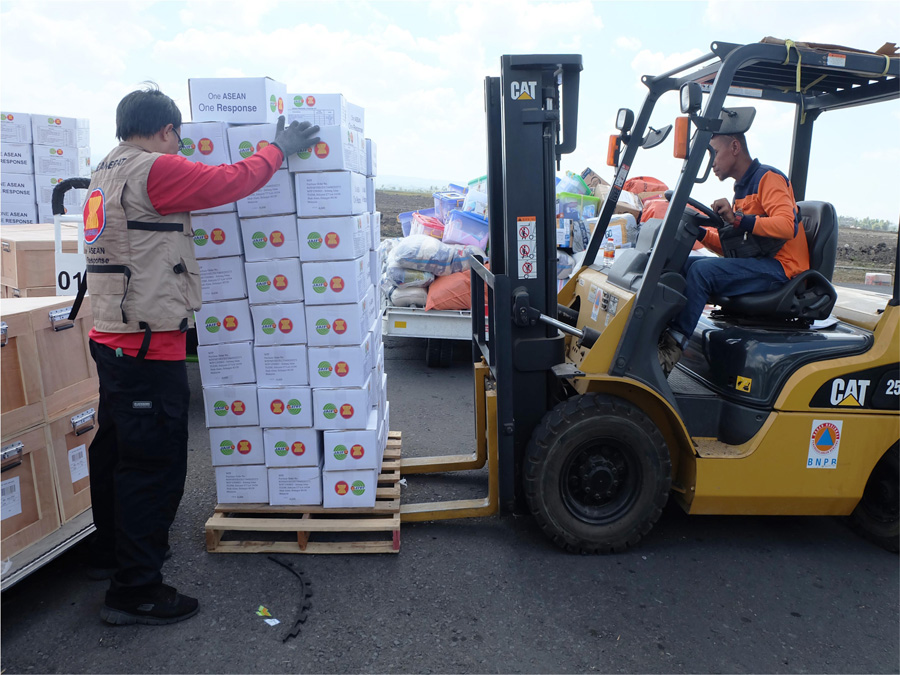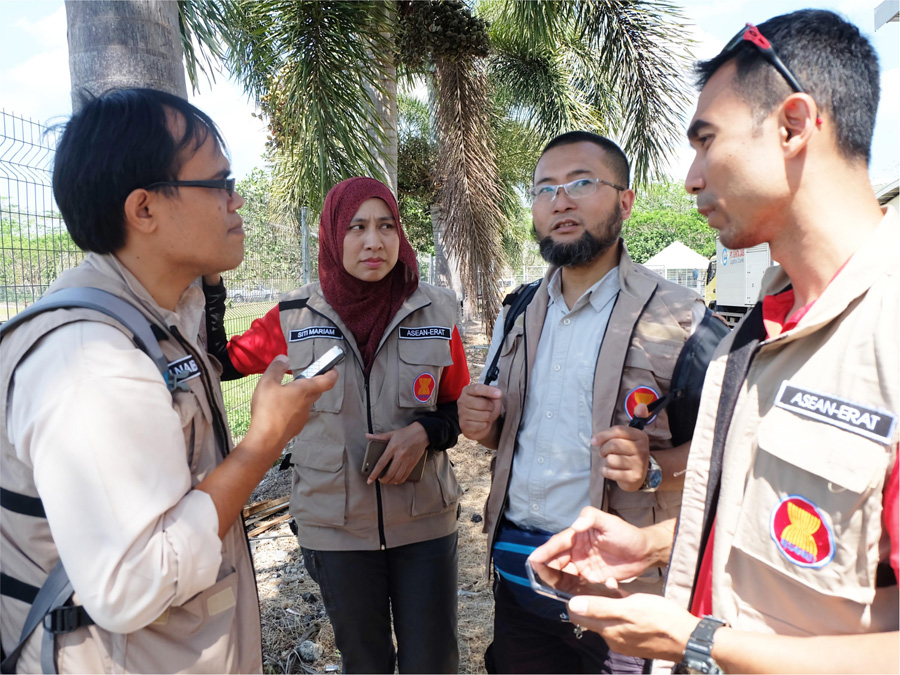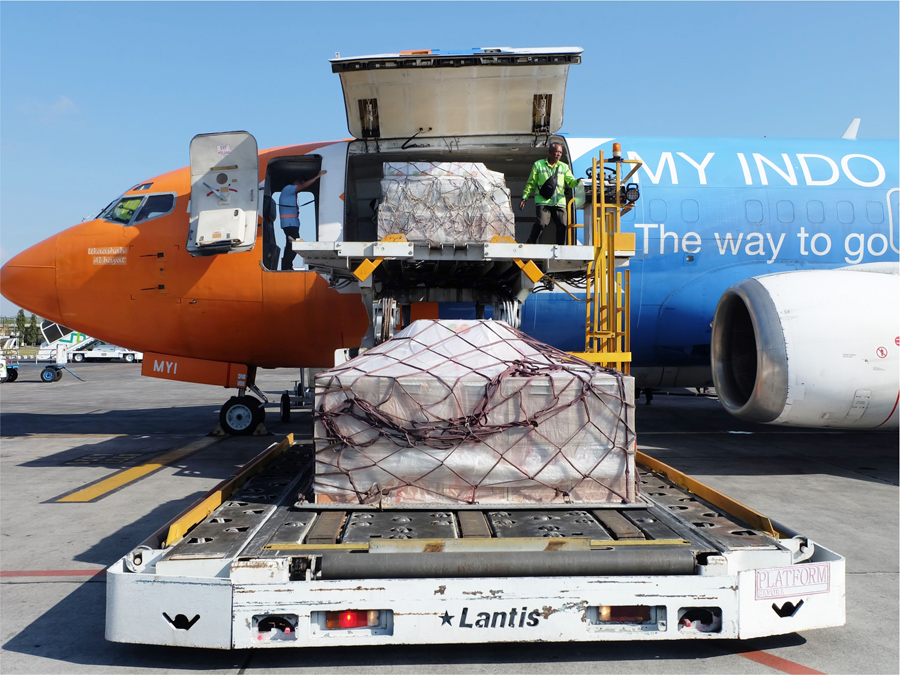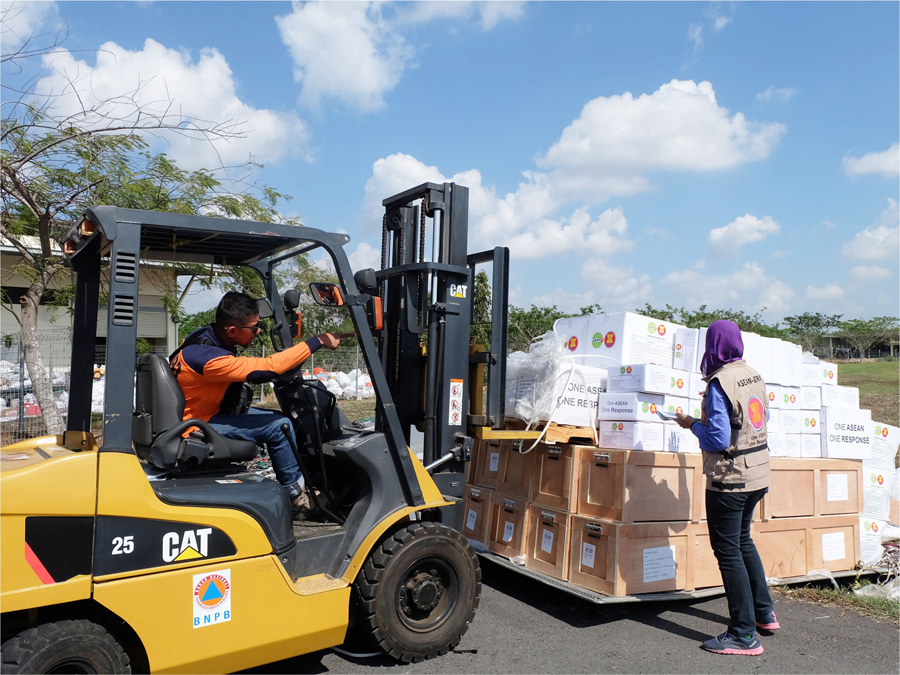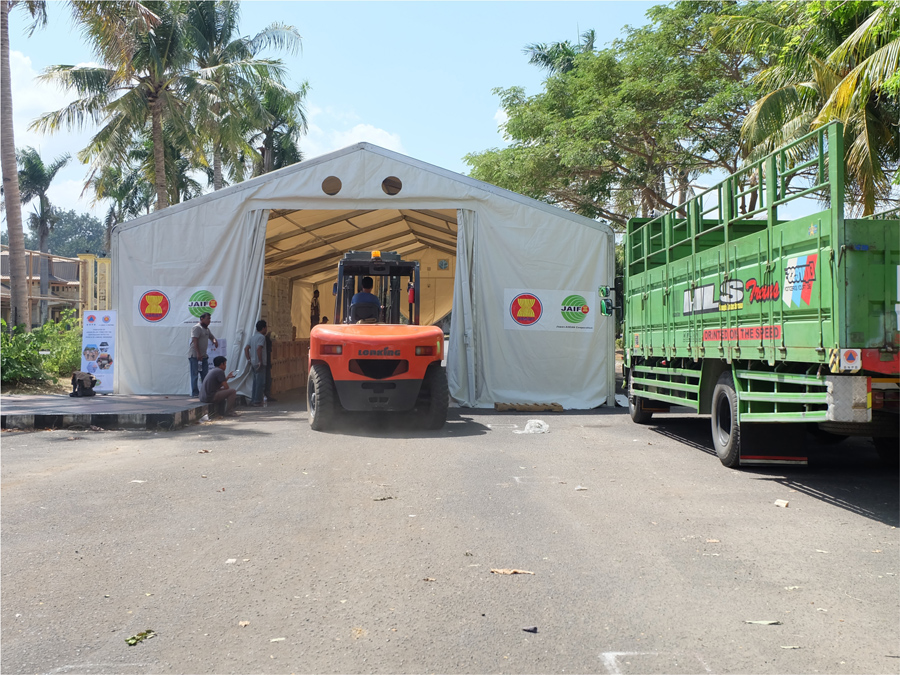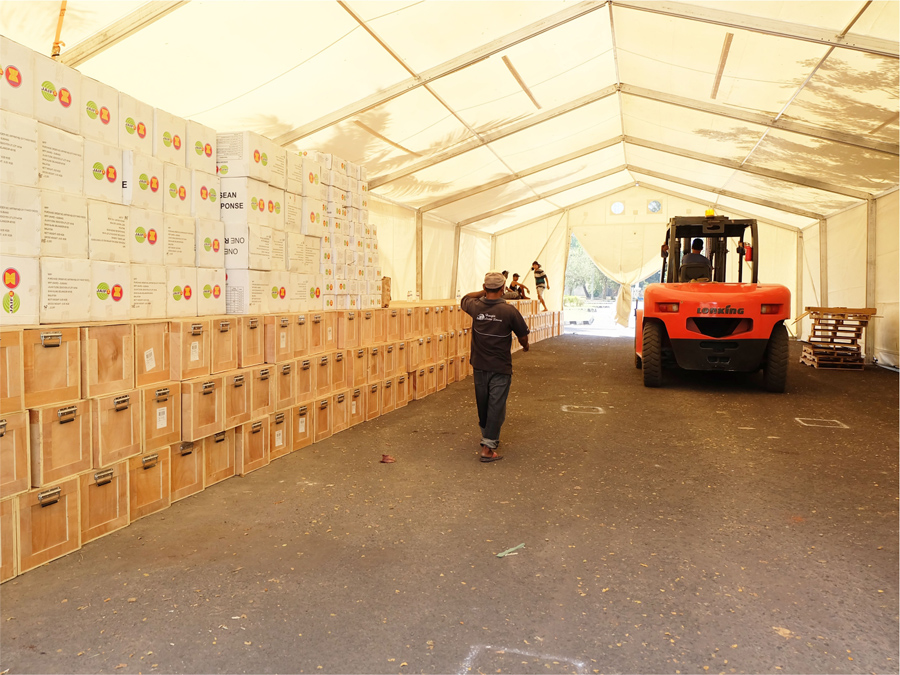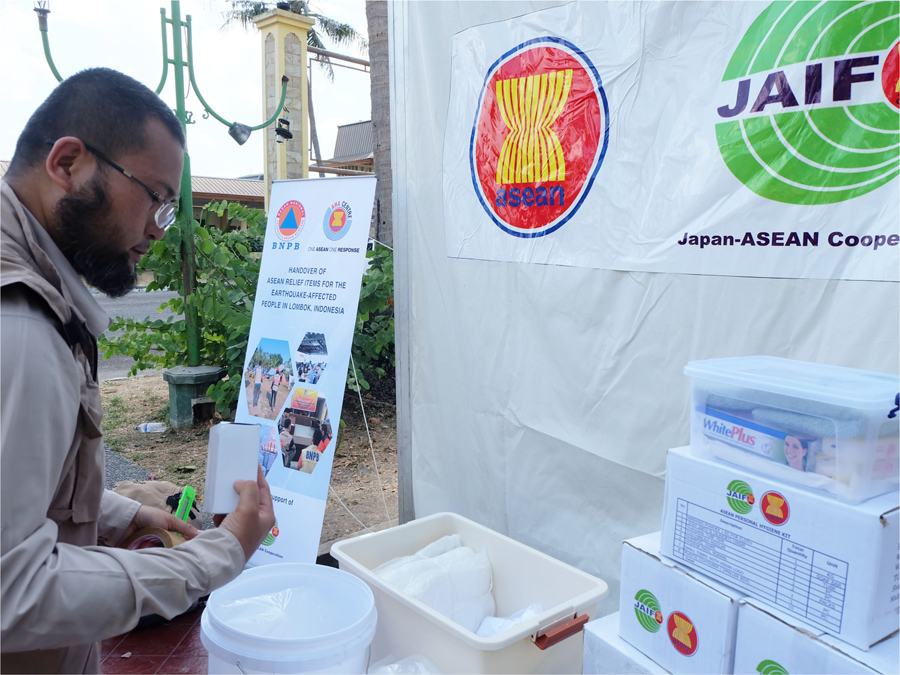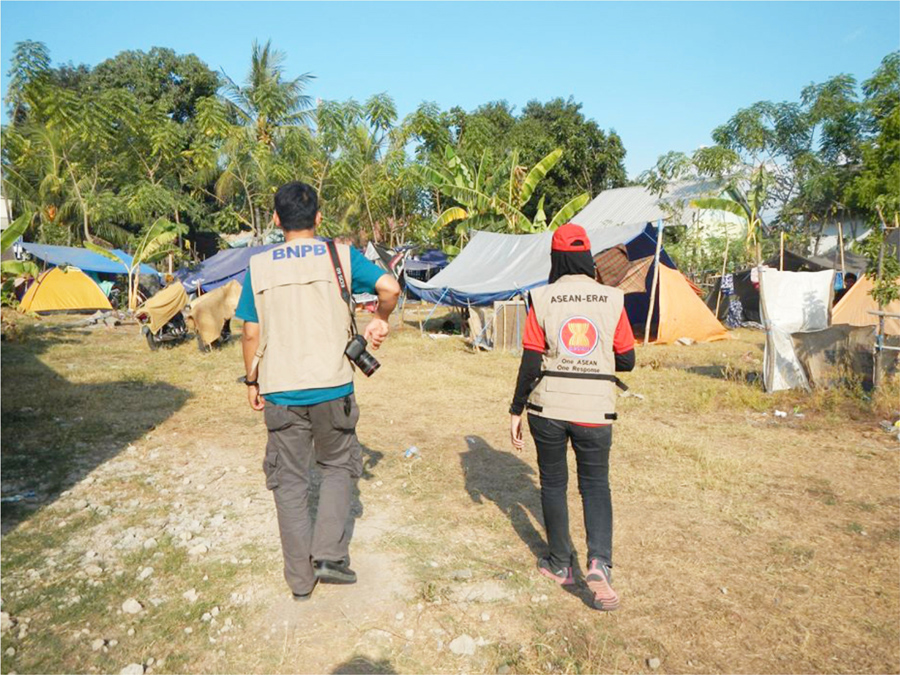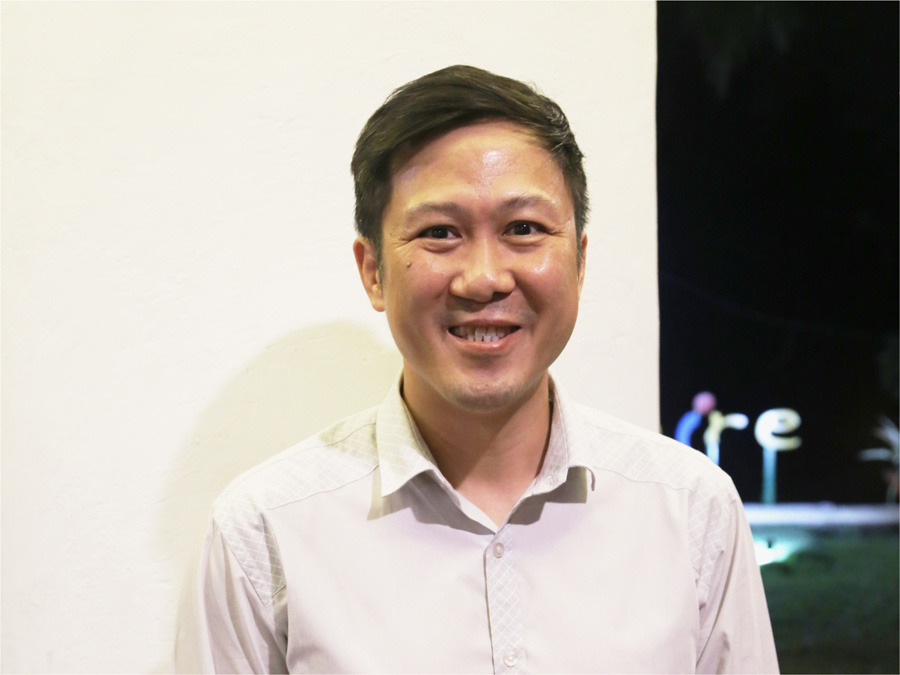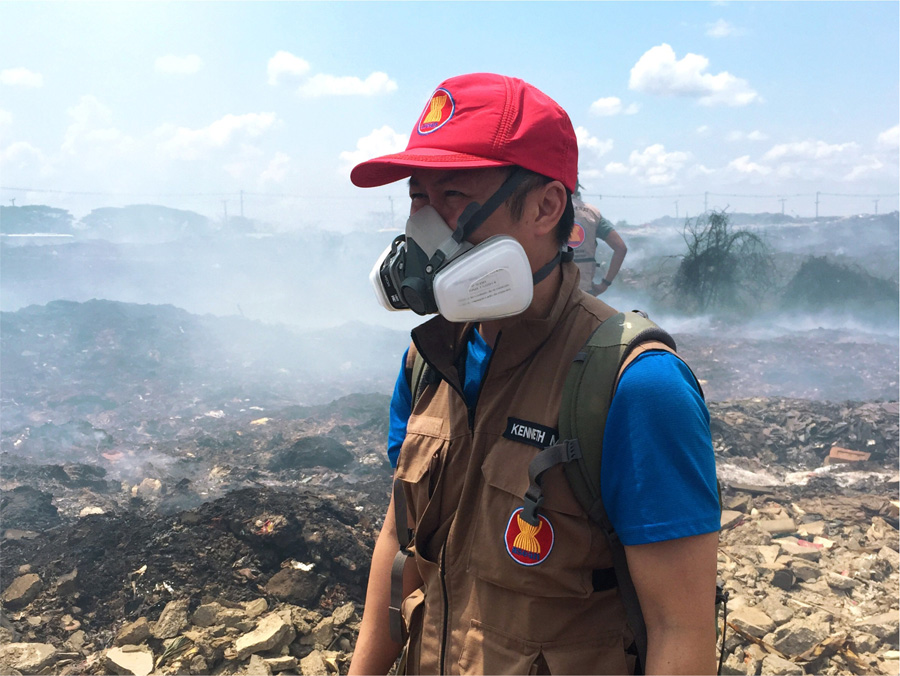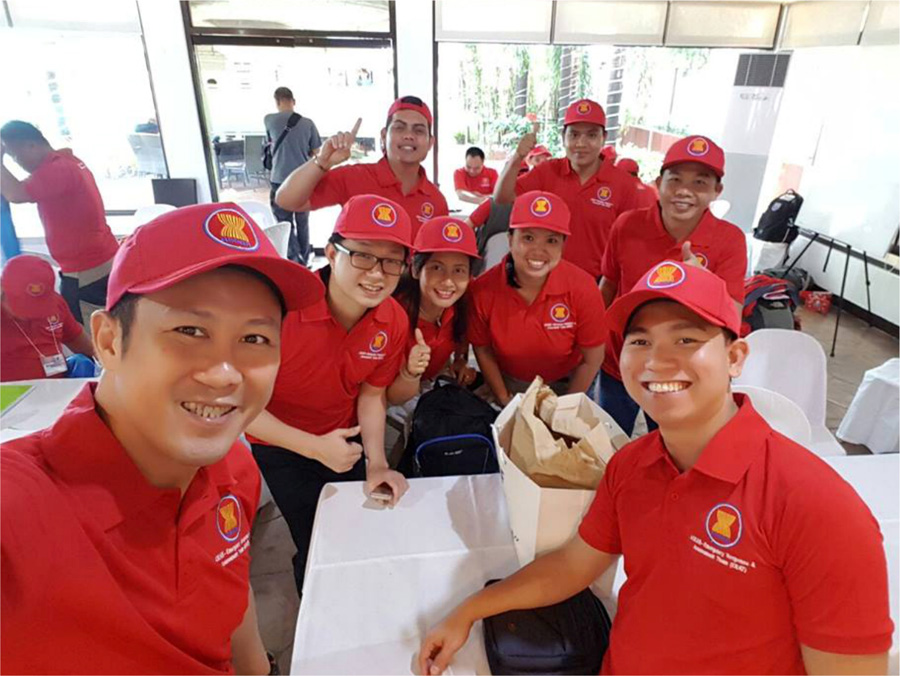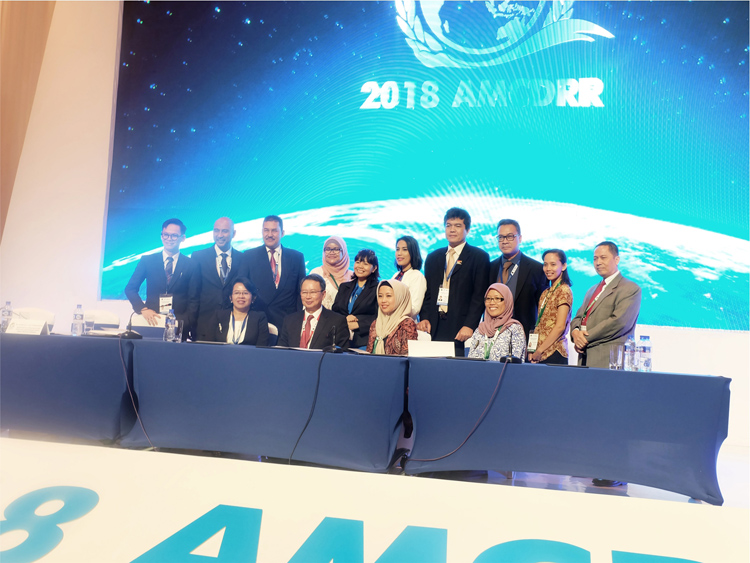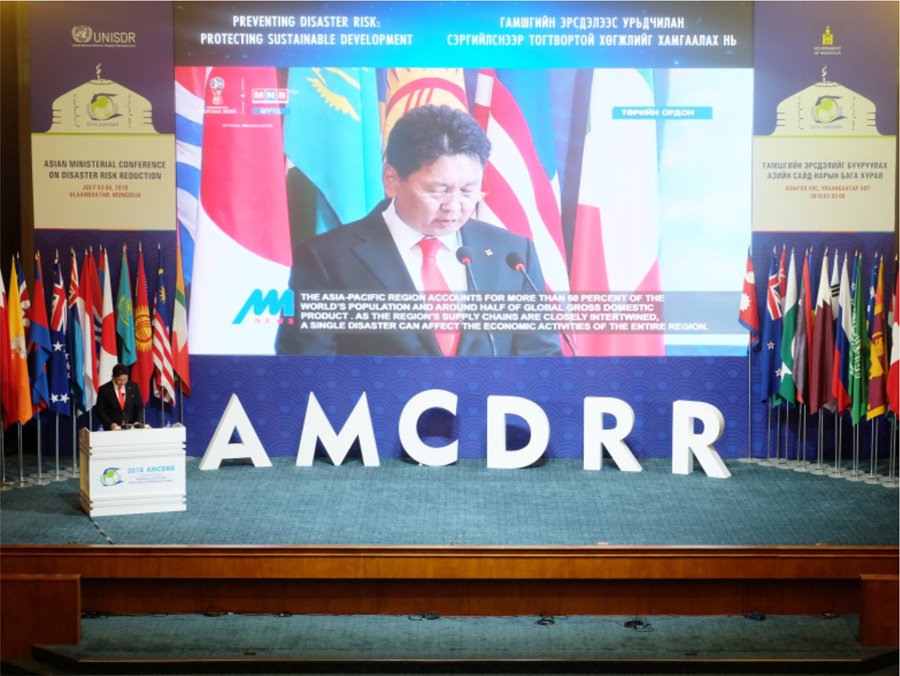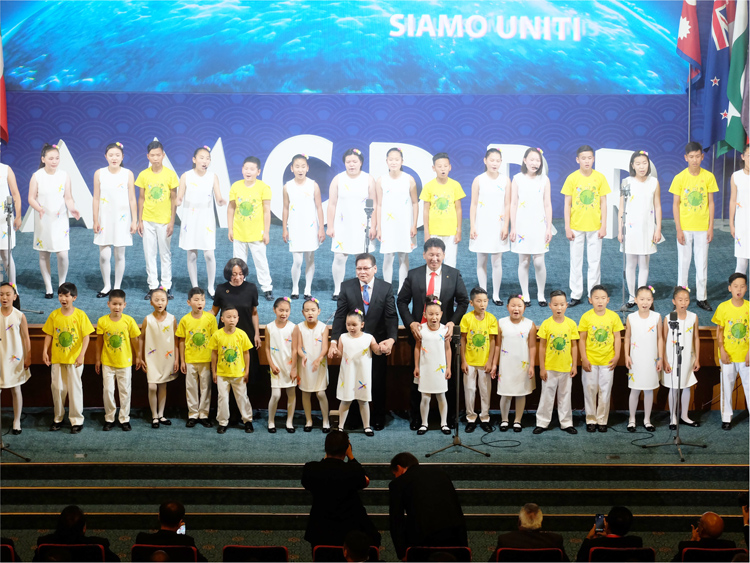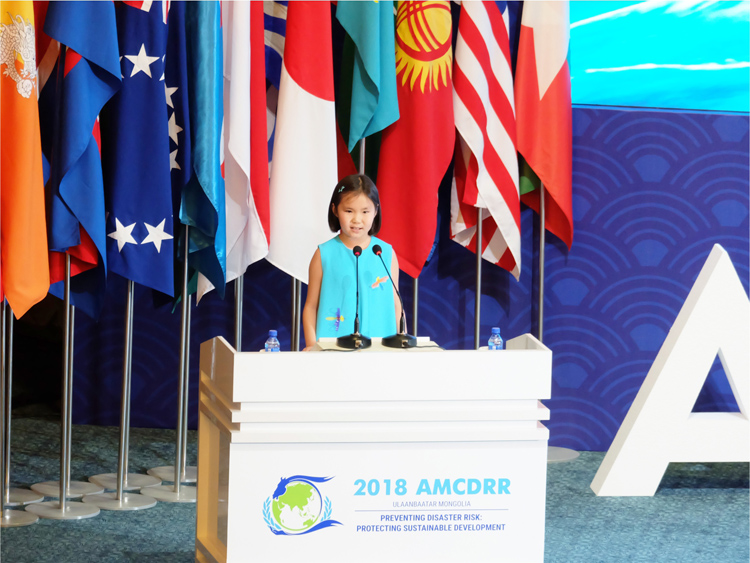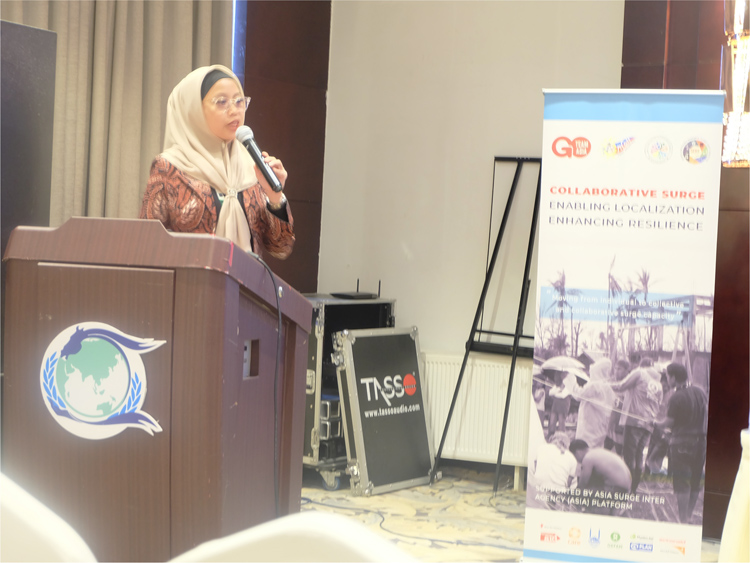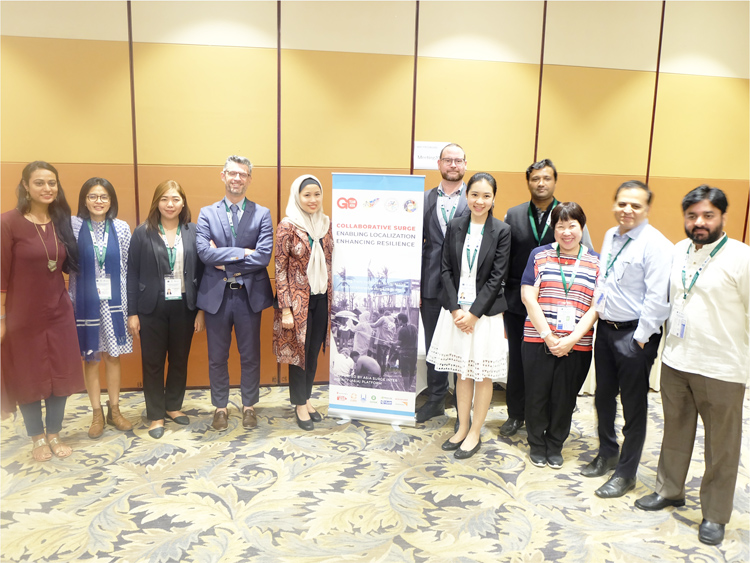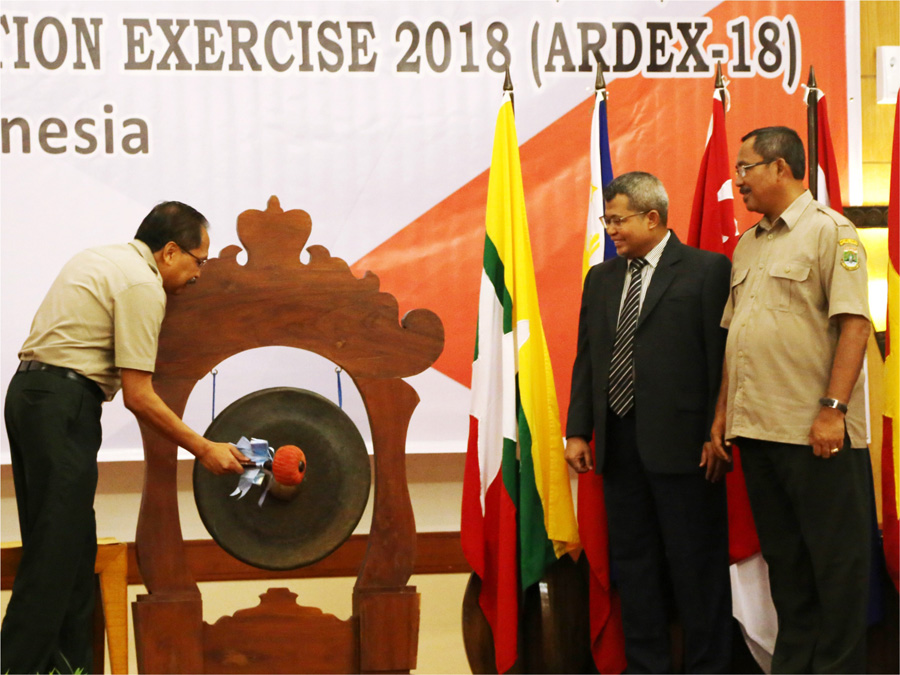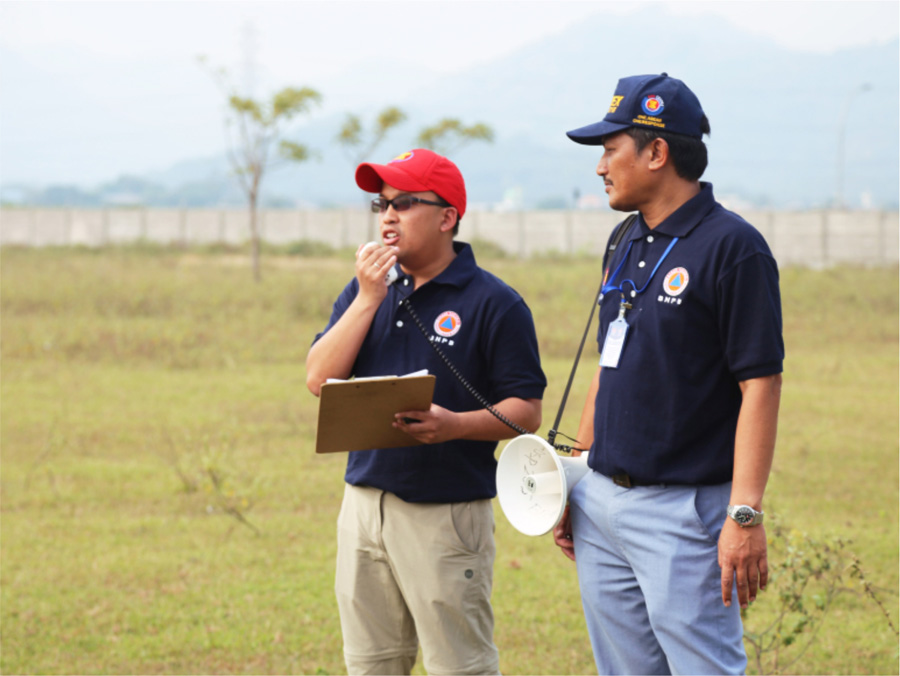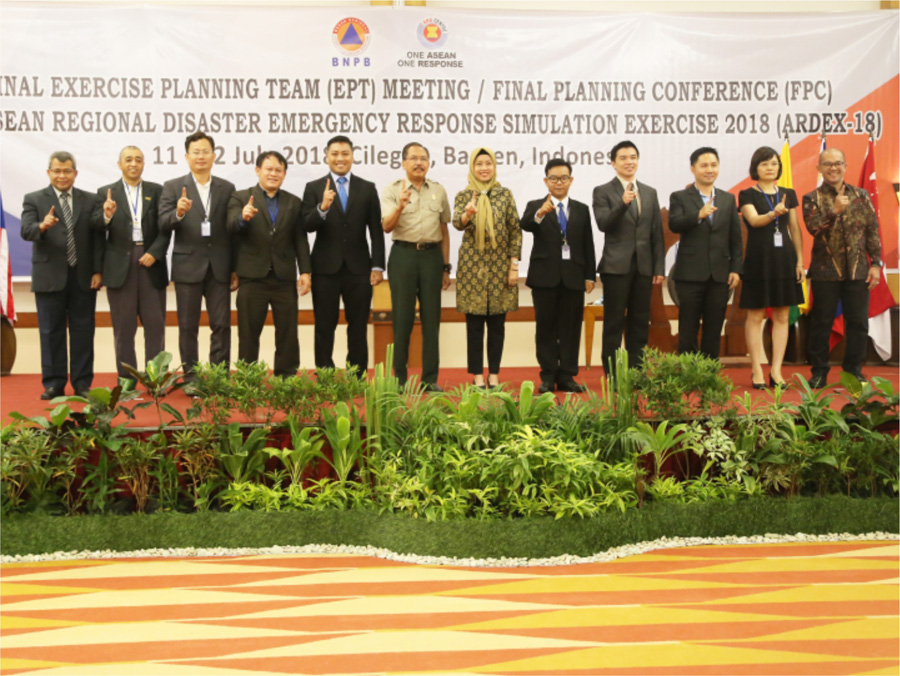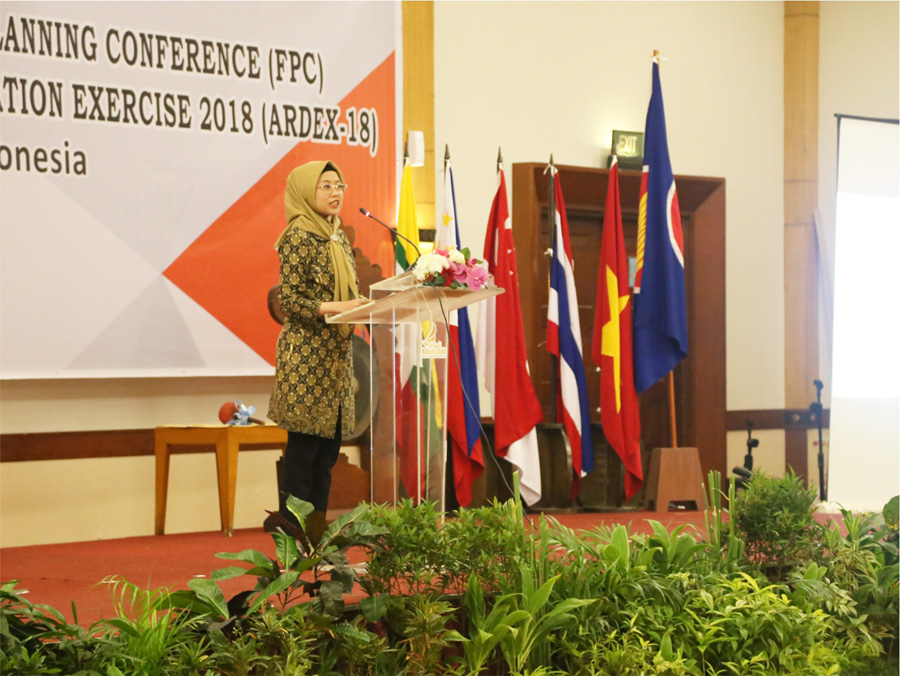Vol 42-Mr.Harlan V.Hale

MR.HARLAN V. HALE
Mr. Harlan Hale, the Regional Advisor for Disaster Response and Risk Reduction for USAID’s Office of U.S. Foreign Disaster Assistance, is one of the world’s most experienced and renowned humanitarian logistics and disaster risk reduction experts. Spending over thirty years working on the ground with both natural disasters and human induced conflicts has equipped him with the vast array of knowledge required to advise his many colleagues in the USAID and other U.S. Government Agencies. His working experiences include many natural disasters and conflicts across the world, including the Kosovo conflict in Eastern Europe, Rwandan conflict in Africa and the Padang earthquake in Indonesia just to name a few.
Starting out over thirty years ago as a volunteer with the US Peace Corps, Mr. Hale learned quickly the importance of logistics and transportation for people’s livelihoods. He experienced the reality of limited transportation in Central Africa, resulting in adverse impacts on prices of goods, access to vaccination and health services, and low levels of trade between cities. Through this, he concluded that if he could choose to change one thing to cause a large-scale impact, it would be the enhancement of transportation and logistics in the region.
After some time working in transportation and logistics, Mr. Hale saw the impact that natural disaster was having on his work and the communities around him, and felt some of such disasters and their affects could be avoided or at least mitigated. Considering this, he raises the analogy of a young fire-fighter who “will focus on extinguishing the fire again and again. However, as time goes by, he may start to ask, ‘why did the building catch fire in the first place?’” These experiences saw Mr. Hale’s work begin transitioning into Disaster Risk Reduction (DRR). Such realisations and experiences, through his long journey of different nations and regions, now sees him working as a Regional Advisor for Disaster Response and Risk Reduction for the USAID office based in Jakarta, Indonesia.
Mr. Hale sees his current role as being aimed at enabling other people to do things. He advises US missions, embassies, USAID in the region, the office in Washington, UN agency partners, implementing NGOs and “practically anybody who asks,” he says. When a disaster strikes, Mr. Hale and his team will assess the situation, then advise whether US assistance is required and welcomed. Mr. Hale prioritises practical and technical support, preferring boots on the ground in order to support the needs of the affected population. He identifies the importance of finding gaps and determining how such gaps can be filled. Alongside this, Mr. Hale highlights the importance of investigating alternative support ideas such as cash-based assistance, which he feels provides more flexibility and opportunity for communities to define and fulfil their own specific needs after a response. Such ideas and opportunities are an area that he constantly addresses during his consulting work.
His move from Africa to Asia formed a major challenge and transition for Mr. Hale, with one of the largest and influential factors on his new role formed by the enormity of Asia’s population. “With this level of population density, no matter what takes place, the scale and impact will be huge” he says. “In Africa, the population was smaller, and there were a lot of open spaces.” “In our region things are more complex” Mr. Hale continues. “The people are much more diverse and with different needs.”
For Southeast Asia itself, as one of the most disaster-prone regions in the world, Mr. Hale sees an increasing awareness towards disaster risk reduction, particularly within the region’s governments. He highlights the positives of ASEAN’s economic growth, while also remaining wary that such growth increases the threat of having ‘more to lose’. “Buildings, facilities, transportation, and many other things can be destroyed in a natural disaster” he reminds us. “People should start investing more in DRR to prevent huge economic losses.” DRR activities can help communities become more self-reliant by giving them the tools and training to better withstand the impacts of disasters. Within this Mr. Hale highlights the importance of DRR being undertaken not only at government level, but importantly on an individual level as well.
Teamwork forms one of Mr. Hale’s key aspects when identifying impact within disaster response efforts. Strong teamwork, with strong team members, is much more likely to have positive results than individuals ‘trying to save the world’. Strong teams can also result in more positive experiences for a team’s members, as Mr. Hale has witnessed the support and influence that strong teams can have on decreasing stress and sharing the array of challenges that arise during responses. He also highlights the important role of women within responses across all levels, and the need to continue the drive for more gender balance and women’s empowerment within the disaster management field.
Through his time in the ASEAN region, Mr. Hale has also recognised the importance in the cooperation between NDMOs of ASEAN nations and their work through the AHA Centre as a significant step forward for disaster management in the region. The commitment and engagement of each NDMO shows a desire to learn from one another and from outside, which he believes will surely result in increased capacity throughout ASEAN disaster management practices. He also highlighted the importance of unity within ASEAN, especially the idea of support being provided by the region when one of its nations is affected by disaster. He says that ASEAN nations are like neighbours, or even families, and that families always help each other out, with the ASEAN region representing one giant family overall.
Written by : Christella Feni, William Shea | Photo : USAID, AHA Centre
- Published in The Other Side
Vol 42-DELSA II Project Steering Committee Meeting

DELSA II
PROJECT STEERING COMMITTEE MEETING
MANILA, THE PHILIPPINES, 24TH AUGUST 2018
Entering its second phase of implementation, the Disaster Emergency Logistics System for ASEAN (DELSA) Phase II project continues to contribute to the implementation of One ASEAN One Response, specifically in the area of stockpile deployment to disaster-affected countries. As the leading mechanism in the Phase II project, the DELSA Phase II Project Steering Committee (PSC) meeting was held on the 24th of August in the OCD-NDRRMC Office, Camp Aguinaldo, the Philippines.
As reported in the meeting, during 2018 the DELSA Phase II project has contributed to stockpile deployment and local procurement in response to the floods in Lao PDR, floods in Myanmar, and the earthquakes in Indonesia, providing relief items to a total value of USD 426,867. The remaining ASEAN stockpile, which is stored in the UN Humanitarian Response Depot in Subang, Malaysia, consists of 45 types of relief items amounting to the total value of USD 1,777,460.
This meeting also formed an opportunity for the DELSA Project Management Team to report the progress of the establishment of the satellite warehouses in the Philippines and Thailand. The satellite warehouse in the Philippines utilises a building owned by the Armed Forces of the Philippines in Camp Aguinaldo, which after some renovations, will be ready to house the satellite warehouse.
Meanwhile, the satellite warehouse in Thailand is planned to be fully operationalised by the first quarter of 2019, with a scheduled official launching during the ASEAN Summit in April 2019, coinciding with the induction of the Thailand Chairmanship of ASEAN.
A Memorandum of Understanding (MoU) for the establishment of the satellite warehouse in the Philippines was also signed during the meeting by Ms. Adelina Kamal, Executive Director of the AHA Centre, and Under Secretary Ricardo B. Jalad, Executive Director of NDRRMC and Administrator of the OCD Philippines. This MoU marks the strengthening of cooperation and commitment between the AHA Centre and OCD Philippines to support the readiness of ASEAN in responding to disasters. The meeting also resulted in other significant guidance and decisions on key resources, criteria and partnerships to support the network of the DELSA warehouses. A key study on stockpile identification was agreed, with results to act as a baseline that will serve as a reference for minimum types and quantity of stockpiles to be stored across all three DELSA warehouses, as well as specific stockpiles unique to each warehouse.
The DELSA Phase II PSC Meeting was attended by the AHA Centre, ASEAN Secretariat, representatives from Singapore and Malaysia as the Co-Chairs of the ACDM Working Group on Preparedness and Response, representatives from the Mission of Japan to ASEAN and Japan-ASEAN Integration Fund (JAIF) Management Team as the donor, and representatives from the Philippines and Thailand as the host countries of satellite warehouses.
Written by : Caroline Widagdo | Photo : AHA Centre
- Published in AHA Centre Diary 3
Vol 42-ASEAN-ERAT Advanced Course on Information Management

ASEAN-ERAT
ADVANCED COURSE ON INFORMATION MANAGEMENT
VIENTIANE, 6-10 AUGUST 2018
As part of the transformation plan for the ASEAN Emergency Response and Assessment Team (ERAT), during August, the AHA Centre facilitated the first-ever ASEAN-ERAT Advance Course, which aims to prepare a group of information management specialists for disaster responses in the region. The five-day course was conducted in Vientiane, Lao PDR, in partnership with MapAction, engaging ten ASEAN-ERAT personnel from seven Member States as the first batch of graduates from this new course.
During the course implementation, Lao PDR –the host of the event – remained in the middle of an emergency response, following Tropical Storm 11 and the resulting dam collapse in Attapeu Province. Therefore, during the opening ceremony, Mr. Prasong Vongkhamchanh, the Director-General of Social Welfare Department and Head of Lao PDR’s National Disaster Management Organisation, encouraged all participants to utilise real data and create outputs that may be useful for the actual emergency operations taking place in the country. Meanwhile, Ms. Adelina Kamal, the Executive Director of AHA Centre, emphasised that alongside physical relief items, information also forms a key support mechanism at times of emergency.
In order to qualify as participants, active ERAT members were encouraged to send a motivation letter, registration form, and follow a recruitment procedure which includes a one-on-one interview with the selection committee. The course combines both theoretical components and practical exercises to sharpen the participants’ skills in disaster mapping, data analysis, and data visualisation. At the end of the course, the final products were presented to the facilitators, with a chosen product to be published and disseminated by the AHA Centre as an official situation update on the Myanmar flooding.
“The ASEAN-ERAT Pilot Advance Course on Information Management enhanced my capabilities in fulfilling the tasks and responsibilities of an Information Manager during disaster responses”, said participant Lawrence Anthony Dimailig from the Department of Social Welfare and Development of the Philippines. In addition to the Information Management course, the AHA Centre has also developed curricula for two other advance courses on Rapid Assessment and Humanitarian Logistics. The Rapid Assessment course was undertaken in Bangkok, Thailand, in late August, and the Humanitarian Logistics course is scheduled to take place in Subang, Malaysia in late September 2018. All three courses are supported by the Japan-ASEAN Integration Fund, and the results will be evaluated to refine the conduct of the future of ASEAN-ERAT advance courses.
Written by : ShintyaKurniawan | Photo : AHA Centre
- Published in AHA Centre Diary 2
Vol 42-AHA Centre Commences ACE Programme 5th Batch

AHA CENTRE COMMENCES
ACE PROGRAMME 5TH BATCH
The fifth batch of the AHA Centre Executive (ACE) Programme formally commenced on the 14th of August 2018 in Jakarta, Indonesia, with 17 disaster management professionals from the National Disaster Management Organisations (NDMOs) of ASEAN Member States to participate in the four-month course. Upon finishing the course, this new batch of ASEAN disaster management professionals will join the other 62 graduates of the programme, who have been prepared by the AHA Centre and its partners since the course first began in 2014.
By joining ACE Programme, participants are provided with the chance to acquire meaningful experience and knowledge on dealing with disaster situations, with such learnings supported by the programme’s wide array of diverse courses and trainings. In addition, the participants will also have the chance to undertake comparative studies by visiting disaster-affected areas in Indonesia, Japan, Malaysia, and New Zealand.
“We are all aware of how vulnerable our region is to natural disasters, ranging from cyclone, typhoon, earthquake, landslide, and drought. Knowing this, the ACE Programme is very useful for preparing our future leaders in the field of disaster management, and in promoting a culture of resilience and care for the environment”, said H.E. Dato Lim Jock Hoi, the ASEAN Secretary-General.
The opening ceremony was graced by the presence of H.E. Dato Lim Jock Hoi, the Secretary-General of ASEAN; H.E. Kazuo Sunaga, the Ambassador of Japan to ASEAN; H.E. Pam Dunn, the Ambassador of New Zealand to ASEAN; H.E. Jane Duke, the Ambassador of Australia to ASEAN; Mr. Dicky Fabrian of National Disaster Management Authority of Indonesia (BNPB); other partners of the AHA Centre and representatives of ASEAN Dialogue Partners.
The ACE Programme is an intensive course that is specifically designed to address the needs for a comprehensive and collaborative disaster management strategy in Southeast Asia. The live-in concept of the course enables participants to build strong operational ties and emotional bonds, which can be useful for coordination amongst NDMOs of ASEAN Member States at a later time. The programme will also strengthen the operationalisation of One ASEAN One Response commitment through building capacities of the participants in the area of disaster management and humanitarian assistance operations.
“When a disaster strikes, we know that we can always rely on the ACE Programme graduates when we need them, and they can always rely on us when they need us”
said Adelina Kamal, the Executive Director of the AHA Centre.“Many of the ACE Programme graduates have now represented their countries in ASEAN meetings; some even have confidently given their views and their directions to the AHA Centre in those meetings” she continued.
Written by : Valerie Bayhon | Photo: AHA Centre
- Published in AHA Centre Diary 1
Vol 42-Types of Natural Disaster Geophysical (Volcano)

TYPES OF NATURAL DISASTER
GEOPHYSICAL (VOLCANO)
Situated on the Ring of Fire, the ASEAN region faces one of the greatest threats of natural disaster due to geophysical activity along this unstable belt of tectonic plates. One of the key disaster threats categorised into the geophysical type are volcanoes, as well as a range of related disasters that can occur as the result of volcanic activity. During 2018 ASEAN has experienced a range of geophysical events that have triggered disasters. Therefore, understanding the varieties and impacts of such occurrences is highly important for disaster management across the region.
The AHA Centre closely monitors the ongoing dynamic conditions of 150 volcanoes in the ASEAN region that are active and have a recent historical record of eruptions.127 of these volcanoes are located in Indonesia, with 23 in the Philippines, while volcanoes found in other areas of the region are currently dormant. Volcanoes in other ASEAN countries are in dormant condition, such as those in Viet Nam with its last eruptions dated back in the early Holocene era or underwater volcanoes in Andaman Sea between Thailand and Myanmar. Most recently in late 2017 to early 2018, monitoring, preparedness, and pre-emptive evacuations were undertaken by respective local and national agencies due to increased activities on Mount Agung (Bali, Indonesia) and Mount Mayon (Albay, the Philippines). However no lives were lost due to this increased activity. As of September 2018, only Mount Sinabung (North Sumatra, Indonesia) remains at Alert Level IV (out of the maximum 4 alert levels) – which means it may experience major eruptions at any point – with the level IV status ongoing throughout the past five years. Mount Agung remains at Alert Level III, while all other volcanoes in Indonesia and the Philippines are currently at Alert Level II (localised activity with no serious eruption risk).
ABOUT VOLCANOES
A volcano is an opening in the Earth’s crust that allows molten rock, gases and debris to escape to the surface, often exploding through the surface with severe strength and impact on nearby geography. Volcano eruptions are categorised into geophysical hazards that occur when magma (molten rock) is released from a volcanic vent, with eruptions classified into a range of different types including phreatic, phreatomagmatic, surtseyan and effusive (lava-bearing) eruptions.
RELATED HAZARDS
Most hazards, phenomena and disasters associated with volcanic eruptions affect areas close to the volcano itself. Of high importance is the realisation that volcanic activity may also trigger other natural disaster events, including tsunamis, landscape deformation, floods, and tremor-provoked landslides.
LINK TO EARTHQUAKES
Earthquakes and volcanoes are intrinsically linked, as they result from tectonic plate processes that constantly reshape the earth’s surface. Earthquakes form a key clue that a volcano is preparing to erupt, as the movement of magma exerts significant force on the earth above it as pushes through the crust. This pressure from the rising magma causes many of the earthquakes that occur in volcanically active areas. However, such earthquakes also rarely exceed magnitude 5, and are barely noticeable outside the vicinity of the volcano itself. Such earthquakes do help volcanologists to map and track underground lava flows, with different types of earthquakes often resulting based the signature of tremors, then used to determine if the volcano is heading towards an eruption. Seismic information such as this is valuable for volcanologists who are monitoring eruption events such as explosions or lahars.
Written by : William Shea
- Published in Insight
Vol 42-Monthly Disaster Review and Outlook

MONTHLY DISASTER REVIEW AND OUTLOOK
JULY & AUGUST | DISASTER MONITORING & ANALYSIS
(DMA) UNIT, AHA CENTRE
GENERAL OVERVIEW OF JULY AND AUGUST 2018
A two-week period in July saw the development of 5 tropical storms, one of which had a severe affect on the northern ASEAN region. The Southwest monsoon (refer to figure 1.) brought with it heavy torrential rains, resulting in flooding through the Mekong River region. Hydro-meteorological disasters formed the main hazards during this period, and are expected to persist with continued rain over the northern ASEAN region, coupled with drier conditions in southern part of ASEAN.
In contrast to the situation in the northern ASEAN region, droughts in 16 municipalities have been reported across seven consecutive weeks thus far, with one reported wildfire occurrence in the past month. The ASEAN Specialised Meteorological Centre detected hotspots in Indonesia’s Kalimantan and Sumatra during July. General conditions for August remained similar to July, with high rainfall experienced over the northern region, impacting countries in the Mekong region and northern parts of the Philippines.
Throughout the last 2 months, large numbers of earthquakes were recorded and experienced by ASEAN communities. The increased seismic activity is not only restricted to the region,with the phenomenon also seen globally. A total of 232 earthquakes were recorded internationally between the 20th and 26th of August along the Pacific “Ring of Fire” and its adjacent tectonic plates. Of these recorded earthquakes, 37 (15.9%) were recorded at a scale of M 5.0 or above, with 25 (67.6%) of these major earthquakes (≥M 5.0) occurring within a span of 48 hours between August 20th to 22nd. Of these 232 earthquakes, 32 (13.8%) were reported within the ASEAN region. Of the 32 recorded in the region, 11 (34.4%) were reported to be M 5.0 and above. The increasing seismic activity is currently being observed by seismological agencies in anticipation of increased volcanic activity, earthquakes, tsunamis and other related hazards. Nevertheless, in July and August 2018, activity of volcanoes in Philippines and Indonesia stayed within their normal threshold, with no changes in any of their alert levels
The prevailing Southwest Monsoon season is expected to persist until October 2018, with prevailing winds in the region blowing from the southeast or southwest. Climatologically, the Southwest Monsoon season is characterised by rainy conditions in the northern ASEAN region, and dry conditions in the southern ASEAN region.
OUTLOOK FOR AUGUST-OCTOBER 2018
Warmer than average conditions can be expected over the equatorial ASEAN region, especially in Borneo and south-eastern Sumatra, while near-average or slightly above-average temperatures are forecasted over most other areas during the August-October season.
For the equatorial ASEAN region, below-average rainfall is forecasted between August and October. The drier-than-usual weather could to lead to an escalation in hotspot activities and an increased risk of transboundary smoke haze.
Near-average rainfall is forecasted for the rest of the region, including the northern ASEAN region. Hotspot activities in the northern ASEAN region are likely to remain subdued due to wet weather. The outlook is assessed for the region in general. For specific updates on the national scale, the relevant National Meteorological and Hydrological Services as well as Geological Services should be consulted.
Written by : Mizan Bisri, Qing Yuan Pang
DISCLAIMER
AHA Centre’s estimation is based on data and information shared by National Disaster Management Organisations (NDMOs) and other relevant agencies from ASEAN Member States, international organisations and news agencies. Further information on each recorded-significant disaster, description and details of data and information are available at: http://adinet.ahacentre.org/reports.
- Published in Monthly Disaster Outlook
Vol 42-ONE ASEAN ONE RESPONSE for Lombok

ONE ASEAN ONE RESPONSE
FOR LOMBOK
During August 2018 the AHA Centre once again evidenced ASEAN’s solidarity for disaster-affected population in the Southeast Asian region, this time supporting communities in the well-known tourist destination of Lombok, West Nusa Tenggara, Indonesia. The area was recently the epicentre of multiple earthquakes, with the initial major quake recorded at M 6.4 on Sunday the 29th of July. A week later, on the 5th of August, a larger M 7 earthquake hit the already-affected area, increasing numbers of casualties and causing greater damaged to buildings and livelihoods within the Lombok region. The main shock also triggered a tsunami warning, which thankfully did not result in an actual tsunami event. However, throughout the month of August, over 1000 aftershocks were recorded by the Meteorological, Climatology, and Geological Agency of Indonesia (BMKG), with the region still remaining vulnerable to quakes during the ongoing recovery phase.
Following the main earthquake on the 5th of August 2018, the AHA Centre intensified its cooperation with Indonesian National Disaster Management Authority (BNPB), which had been ongoing since the initial quake in late July. Upon receiving notification of the second earthquake, the AHA Centre immediately deployed a staff member to the field, provided information management and translation support for BNPB, as well as facilitated the deployment of an ASEAN Emergency Response and Assessment Team (ERAT) to the affected region. A little later, the AHA Centre obtained a green-light to mobilise relief items from the ASEAN emergency stockpile in Subang, Malaysia. These relief items – worth approximately USD $154,438 – were picked-up by the BNPB using a chartered flight, arriving in Praya Airport, Lombok, in three batches between early to mid-August.
For Lombok, earthquake events are not particularly new, with notable earthquakes recorded in the region from as early as the year 1856. Consolidated data from the United States Geological Survey and the Indonesian Meteorological and Climatology Agency (BMKG) also noted that major earthquakes above M 6 occurred on the island in 1970, 1972, 1978, 1979, and 2000. Based on the latest National Disaster Risk Index – published by BNPB in 2016 – Lombok is categorised as a medium to high-scale earthquake-prone area. Considering these vulnerabilities and risks, the resettlement areas currently underconstruction will use similar earthquake-resistant technology that has been adopted through the post-earthquake recovery periods in Aceh and Nias, Sumatera, Indonesia.
“Indonesia is part of the ASEAN community, and the BNPB has been working closely with the ASEAN coordinating agency for disaster management, or AHA Centre. All Heads of State and Government of ASEAN countries have agreed to stand as one, whenever natural disasters happen in neighbouring states. Based on the One ASEAN One Response Declaration, Indonesia trusts the AHA Centre to provide additional logistical support that is required for the emergency response. For example, this Mobile Storage Unit we stand in that can serve as a portable warehouse, and family tents that can provide shelters for the displaced communities”, said H.E Willem Rampangilei, the Chief of BNPB, in between the emergency responses in Lombok.
On a similar note, the Executive Director of the AHA Centre, Ms. Adelina Kamal, stated that “the ASEAN relief items belong to all ASEAN countries, including Indonesia. When a disaster occurs and relief items are required, ASEAN Member State can access the regional stockpile, and the AHA Centre will facilitate its mobilisation to the affected areas. We would like to show our appreciation to the BNPB for the confidence given to the AHA Centre in complementing the government’s life-saving efforts on the ground. Our partnership strengthens the vision embodied in the ASEAN Declaration on One ASEAN One Response”.
All ten ASEAN Member States have recognised the AHA Centre as the primary regional disaster management coordinating agency in ASEAN. Indonesia has been actively involved in the establishment of the AHA Centre, and has been hosting the AHA Centre since it first opened in November 2011. The mission to Lombok is the AHA Centre’s fifth response this year, bringing the total responses to 23 emergencies in 7 ASEAN countries since the AHA Centre’s establishment.
Written by: Shintya Kurniawan | Photo : AHA Centre
- Published in Highlight
Vol 41-Mr. Kenneth Mak

MR. KENNETH MAK
A 15-year veteran with the Singapore Civil Defence Force (SCDF), Mr. Kenneth Mak became an ASEAN Emergency Response and Assessment Team (ASEAN-ERAT) member after participating in the 6th training in 2016. His current work with the SCDF’s HazMat (Hazardous Materials) department has strengthened the capacity of ASEAN-ERAT to undertake their work, particularly in response to the dumpsite fires in Myanmar earlier this year. In an interview with The Column, Kenneth offered some unique insights regarding the Myanmar response, the ASEAN-ERAT programme, and similarities between the SCDF and other ASEAN bodies regarding disaster management.
The Myanmar dumpsite fires of late April/early May, 2018 were Kenneth’s first deployment with ASEAN-ERAT, as the region called upon his specialised background related to hazardous materials in response to the disaster. With the impact of the ongoing fires beginning to have a significant impact on nearby communities, Kenneth deployed with other ASEAN-ERAT members to provide expertise on controlling and extinguishing the fires, as well as provide support related to health effects that were increasing during the disaster. “The main request from Yangon city was that they were looking for a firefighting and hazard specialist to give recommendations on the operations. This is basically what I do –firefighting and hazardous material operations – so I was quite comfortable” remembers Kenneth. The context of this being a human-induced disaster is not lost on him either, as he states “Myanmar dumpsite fire was unique compared with other responses, because it was not only a natural disaster, but a fire incident – a first for the AHA Centre and also a first for ERAT deployment”.
Joining the ASEAN-ERAT programme has been an interesting experience for Kenneth, as it has allowed him to engage further with disaster response across the region. While the Myanmar dumpsite response stands as his maiden engagement thus far, Kenneth highlights the importance and relevance of the training undertaken upon joining the ASEAN-ERAT programme. The overall authenticity of the field exercise that forms a significant part of the programme training is a key highlight for Kenneth, preparing participants for deployment within a context that is as ‘real’ as possible. “Sometimes we thought that during the training the scenario that was given to us was actually real. It is a true reflection of what was going to happen. The training actually geared us up very well before the deployment” Kenneth remembers.
Similarities between his work with the SCDF and now as an ASEAN-ERAT member are particularly notable for Kenneth. He notes the reality that often there is a link between industrial or human-influenced disasters and natural disasters. “We have to realise that many environmental emergencies may be indirectly caused by natural disasters, such as earthquake or flood”, he states. Kenneth also sees strong similarities between the responses undertaken by companies for industrial disasters, and natural disaster responses implemented by local governments. For industrial disaster responses, it is the companies who most understand their surrounding environment and the situation at hand, and this is mirrored by the role of local governments within a regional natural disaster response. “We need to work with the local government so they understand the risks they are facing, and if anything happens, support the development of a contingency plan for response”, he says. “The government holds a similar role to companies who are the engaged in the disaster site, as they know the premises well, and they know what they are handling”.
“We need to work with the local government so they know the risks they are facing, and if anything happens, support the development of a contingency plan for response”, he says. They are similar to a company, as “they are the nearest, they know the premises well, and they know what they are handling”.
Overall, the value of ASEAN-ERAT, and the role of the AHA Centre, is a key highlight for Kenneth. “I think in terms of relevancy of ERAT, I think it is unique. Because you know there are 10 ASEAN countries and we have enjoyed a close working relationship. We are familiar to ASEAN cultures too”, he says. This is where the role of such programmes and institutions are key – “So, when we go to the affected country, they are willing to accept us more readily because we are engaging with each other more frequently”. Kenneth finishes by considering the future, and the role of ASEAN-ERAT both regionally and internationally.
“Over the years, we will build out our expertise, in terms of ERAT response. We will build and can share our own experience that is unique to us”.
Written by : Valerie Bayhon, William Shea | Photo : AHA Centre, personal archive
- Published in The Other Side
Vol 41-Asian Ministerial Conference on Disaster Risk Reduction (AMCDRR), Ulaanbaatar

ASIAN MINISTERIAL CONFERENCE ON
DISASTER RISK REDUCTION (AMCDRR), ULAANBAATAR,
MONGOLIA, JULY 3RD – 6TH 2018.
The Asian Ministerial Conference on Disaster Risk Reduction (AMCDRR) brings together a diverse range of Asian stakeholders and policy makers to discuss latest developments in disaster risk reduction (DRR), of which forms a key element of disaster management efforts across the globe. The biennial meeting was this year held in Ulaanbaatar, Mongolia, from the 3rd to the 6th of July, 2018, with representatives from the AHA Centre in attendance. This meeting forms a key activity in the Asian region’s efforts to implement the Sendai Framework for Disaster Risk Reduction 2015-2030 – with global and regional risk reduction platforms central to its overall implementation success.
While DRR is not a specific focus of the AHA Centre’s direct work, the meeting retains high importance and relevance, as it provides the AHA Centre the opportunity to engage with its partners, share knowledge, and gain relevant insight into actions that may benefit the AHA Centre’s work – particularly related to disaster monitoring and capacity development. 2018’s AMCDRR covered a range of important and strategic topics, including technical sessions on issues such as understanding risk, thematic sessions including private sector interventions, and public events raising topics such as World Tsunami Awareness Day. The meeting also resulted in the formulation of the Ulaanbaatar Declaration – a declaration from all engaged nations that recognises current disaster issues, calls on government and other stakeholders to increase and continue their disaster risk reduction efforts, and resolves to implement all outcomes and efforts stated within the declaration.
For the AHA Centre itself, particular value was gained through engagement in sessions regarding early warning and alert systems, which was a central topic during the 2018 meeting. The implementation and improvement of early warning and alert systems would serve to support increased speed and early engagement within the AHA Centre’s disaster response efforts. As a result, such improvements could lead to stronger instances of early recovery. The AHA Centre was also interested to learn further from civil society organisations about their initiative to develop CSO-led surge capacity, in which CSOs can also mobilise their own assets and capacities during disaster response. Integrating such ideas within the ASEAN Joint Disaster Response Plan (AJDRP), for example, could increase the capacity and coordination within disaster responses across the ASEAN region through the use already-existing assets. Strategies such as this also provide strong evidence for the importance of the ongoing development of the ASEAN Standards and Certification for Experts in Disaster Management (ASCEND) project – increasing its strategic relevance to foster a united and strong ASEAN region under the implementation of the One ASEAN, One Response vision.
Written by : Dipo Summa | Photo: AHA Centre
- Published in AHA Centre Diary 2
Vol 41-ARDEX Final Preparation Meetings

ARDEX
FINAL PREPARATION MEETINGS
CILEGON, BANTEN, INDONESIA, 11-12 JULY, 2018
2018’s ASEAN Regional Disaster Emergency Response Simulation Exercise 2018 (ARDEX-18) is planned to be held in Cilegon, Banten, Indonesia, from the 4th to the 10th of November, engaging all ten ASEAN Member States and a range of other disaster management stakeholders within this all-important disaster simulation exercise. During mid-July, the AHA Centre, alongside the National Disaster Management Authority of Indonesia (BNPB) led the final preparations for ARDEX-18, undertaking the Final Exercise Planning Team (EPT) meeting and Final Planning Conference (FPC) for this key biennial regional exercise.
ARDEX-18 will form the 7th ARDEX simulation exercise for the ASEAN region, which has provided a substantial range of benefits to ASEAN nations as well as for a vast range of stakeholders within the international sector. Alongside this, it has formed an opportunity for the ASEAN Standby Arrangements and Standard Operating Procedures (SASOP) to be practiced, evaluated, and reviewed as the key mechanisms for disaster response within the region. The finalisation of preparations included determining contributions of each actor engaged in the exercise, the roles that will be undertaken by each participant, as well as ensuring the exercise will be implemented in a smooth and efficient manner.
“Conducting exercises will help gather valuable and proper assessments to address gaps in real emergency situations. In addition, doing simulations will help clearly identify roles, types of communications and resources needed,” explained Mr. Dicky Fabrian S.H., LL.M., from the Bureau of Law and Cooperation of the BNPB.
Cilegon has been chosen to host ARDEX-18 due to its identification by the Indonesian Government as one of the most disaster-prone areas, and based on scientific risk analysis undertaken on the location. Cilegon is in close proximity to the Sunda thrust and Krakatau volcano, thus prone to earthquake, tsunami, and volcanic hazards. Furthermore, as an industrial area, Cilegon faces an additional risk of hazardous materials due to the presence of various factories within the city. Due to this factor, ARDEX-18 will be the first simulation exercise that includes training materials related to chemical hazards within the scenario.
“First, ARDEX serves as a key disaster response preparation tool. Next, it serves as a strong platform for the participants to learn from each other. The lessons learned and gathered will be significant for improving the preparations in the future. Third, ARDEX builds a bridge in linking and strengthening the emotional bonding of sisterhood and brotherhood of ASEAN, which is important factor in strengthening the context of ASEAN unity,” said Adelina Kamal, the Executive Director of AHA Centre.
Participants for the upcoming ARDEX-18 are comprised of emergency response teams from all ASEAN Member States, United Nations representatives, private sector, academia, and international partners who wish to contribute to the implementation of One ASEAN One Response.
Written by : Valerie Bayhon | Photo: AHA Centre
- Published in AHA Centre Diary 1
- 1
- 2



